International tourism, number of arrivals - South America
Definition: International inbound tourists (overnight visitors) are the number of tourists who travel to a country other than that in which they have their usual residence, but outside their usual environment, for a period not exceeding 12 months and whose main purpose in visiting is other than an activity remunerated from within the country visited. When data on number of tourists are not available, the number of visitors, which includes tourists, same-day visitors, cruise passengers, and crew members, is shown instead. Sources and collection methods for arrivals differ across countries. In some cases data are from border statistics (police, immigration, and the like) and supplemented by border surveys. In other cases data are from tourism accommodation establishments. For some countries number of arrivals is limited to arrivals by air and for others to arrivals staying in hotels. Some countries include arrivals of nationals residing abroad while others do not. Caution should thus be used in comparing arrivals across countries. The data on inbound tourists refer to the number of arrivals, not to the number of people traveling. Thus a person who makes several trips to a country during a given period is counted each time as a new arrival.
Description: The map below shows how International tourism, number of arrivals varies by country in South America. The shade of the country corresponds to the magnitude of the indicator. The darker the shade, the higher the value. The country with the highest value in the region is Argentina, with a value of 7,399,000.00. The country with the lowest value in the region is Guyana, with a value of 86,400.00.
Source: World Tourism Organization, Yearbook of Tourism Statistics, Compendium of Tourism Statistics and data files.
See also: Country ranking , Time series comparison
More maps: Africa | Asia | Central America & the Caribbean | Europe | Middle East | North America | Oceania | South America | World |
Development Relevance: Tourism is officially recognized as a directly measurable activity, enabling more accurate analysis and more effective policy. Whereas previously the sector relied mostly on approximations from related areas of measurement (e.g. Balance of Payments statistics), tourism today possesses a range of instruments to track its productive activities and the activities of the consumers that drive them: visitors (both tourists and excursionists). An increasing number of countries have opened up and invested in tourism development, making tourism a key driver of socio-economic progress through export revenues, the creation of jobs and enterprises, and infrastructure development. As an internationally traded service, inbound tourism has become one of the world's major trade categories. For many developing countries it is one of the main sources of foreign exchange income and a major component of exports, creating much needed employment and development opportunities.
Limitations and Exceptions: Tourism can be either domestic or international. The data refers to international tourism, where the traveler's country of residence differs from the visiting country. International tourism consists of inbound (arrival) and outbound (departures) tourism. The data are from the World Tourism Organization (WTO), a United Nations agency. The data on inbound and outbound tourists refer to the number of arrivals and departures, not to the number of people traveling. Thus a person who makes several trips to a country during a given period is counted each time as a new arrival. The data on inbound tourism show the arrivals of nonresident tourists (overnight visitors) at national borders. When data on international tourists are unavailable or incomplete, the data show the arrivals of international visitors, which include tourists, same-day visitors, cruise passengers, and crew members. Sources and collection methods for arrivals differ across countries. In some cases data are from border statistics (police, immigration, and the like) and supplemented by border surveys. In other cases data are from tourism accommodation establishments. For some countries number of arrivals is limited to arrivals by air and for others to arrivals staying in hotels. Some countries include arrivals of nationals residing abroad while others do not. Caution should thus be used in comparing arrivals across countries.
Statistical Concept and Methodology: Statistical information on tourism is based mainly on data on arrivals and overnight stays along with balance of payments information. These data do not completely capture the economic phenomenon of tourism or provide the information needed for effective public policies and efficient business operations. Data are needed on the scale and significance of tourism. Information on the role of tourism in national economies is particularly deficient. Although the World Tourism Organization reports progress in harmonizing definitions and measurement, differences in national practices still prevent full comparability. Arrivals data measure the flows of international visitors to the country of reference: each arrival corresponds to one in inbound tourism trip. If a person visits several countries during the course of a single trip, his/her arrival in each country is recorded separately. In an accounting period, arrivals are not necessarily equal to the number of persons travelling (when a person visits the same country several times a year, each trip by the same person is counted as a separate arrival). Arrivals data should correspond to inbound visitors by including both tourists and same-day non-resident visitors. All other types of travelers (such as border, seasonal and other short-term workers, long-term students and others) should be excluded as they do not qualify as visitors. Data are obtained from different sources: administrative records (immigration, traffic counts, and other possible types of controls), border surveys or a mix of them. If data are obtained from accommodation surveys, the number of guests is used as estimate of arrival figures; consequently, in this case, breakdowns by regions, main purpose of the trip, modes of transport used or forms of organization of the trip are based on complementary visitor surveys.
Aggregation method: Gap-filled total
Periodicity: Annual
Note: This page was last updated on December 28, 2019
Home | About | Search | Site Map | Blog | Indicadores en Español

UN Tourism | Bringing the world closer
The first global dashboard for tourism insights.
- UN Tourism Tourism Dashboard
- Language Services
- Publications
share this content
- Share this article on facebook
- Share this article on twitter
- Share this article on linkedin
UN Tourism Data Dashboard
The UN Tourism Data Dashboard – provides statistics and insights on key indicators for inbound and outbound tourism at the global, regional and national levels. Data covers tourist arrivals, tourism share of exports and contribution to GDP, source markets, seasonality and accommodation (data on number of rooms, guest and nights)
Two special modules present data on the impact of COVID 19 on tourism as well as a Policy Tracker on Measures to Support Tourism
The UN Tourism/IATA Destination Tracker
Un tourism tracker.
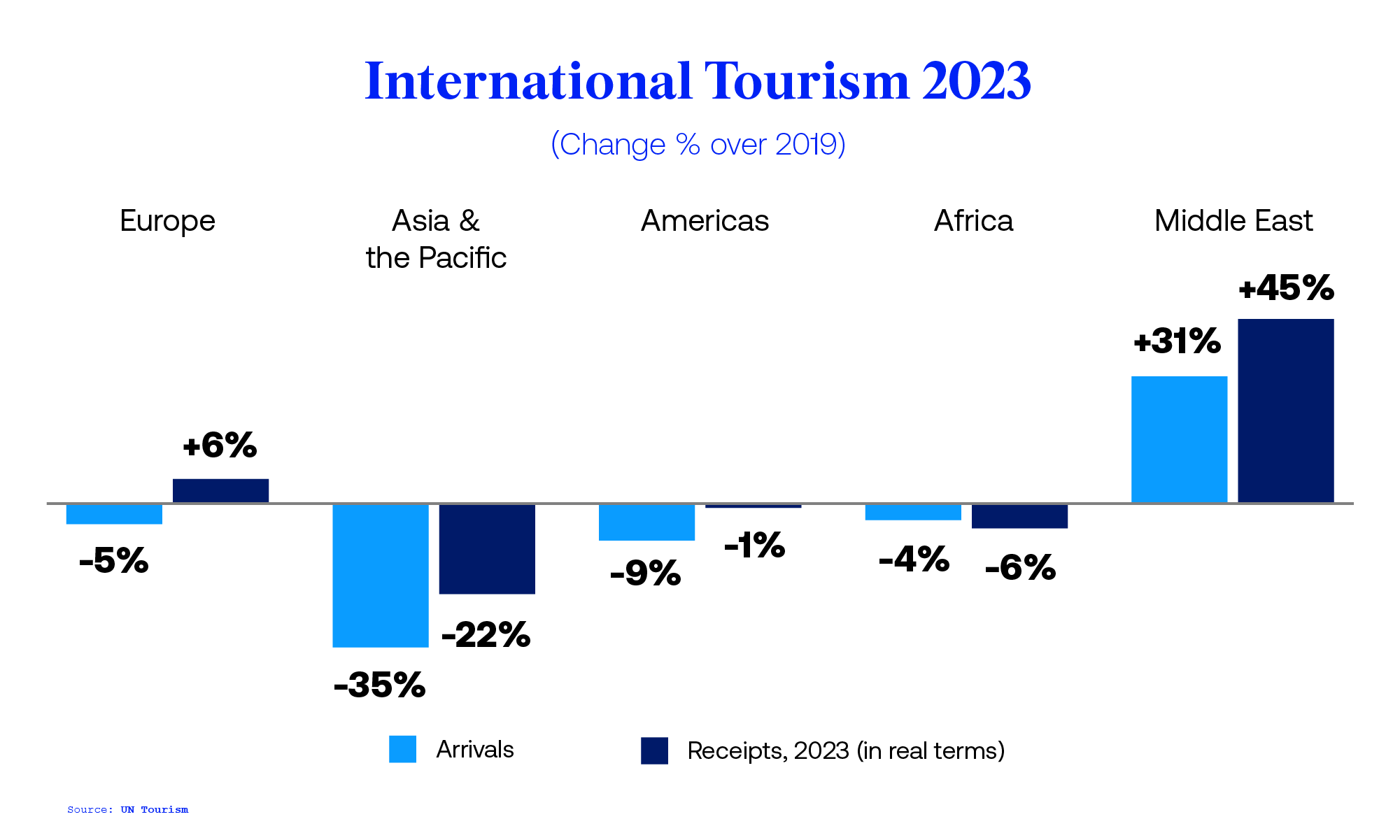
- International tourist arrivals and receipts and export revenues
- International tourism expenditure and departures
- Seasonality
- Tourism Flows
- Accommodation
- Tourism GDP and Employment
- Domestic Tourism
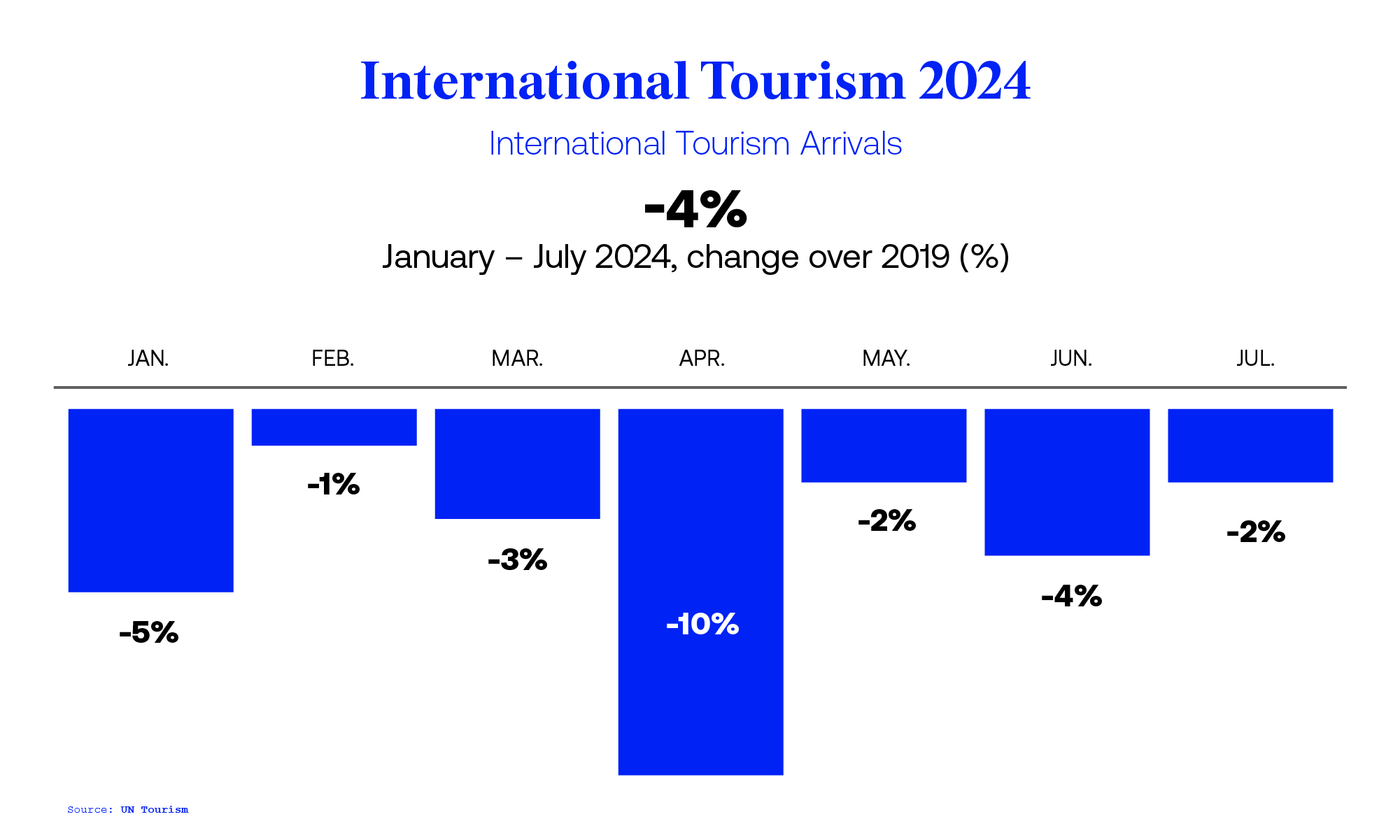
International Tourism and COVID-19
- The pandemic generated a loss of 2.6 billion international arrivals in 2020, 2021 and 2022 combined
- Export revenues from international tourism dropped 62% in 2020 and 59% in 2021, versus 2019 (real terms) and then rebounded in 2022, remaining 34% below pre-pandemic levels.
- The total loss in export revenues from tourism amounts to USD 2.6 trillion for that three-year period.
- International tourist arrivals reached 89% of pre-pandemic levels in 2023 and 97% in Q1 2024
COVID-19: Measures to Support Travel and Tourism
South America Destination Tourism Trends Insight by Type, Source Markets, Foreign Direct Investment and Future Opportunities, 2024 Update
All the vital news, analysis, and commentary curated by our industry experts.

Published: May 22, 2024 Report Code: GDTT- DMI24-07-ST
- Share on Twitter
- Share on LinkedIn
- Share on Facebook
- Share on Threads
- Share via Email
- Report Overview
- Key Players
Table of Contents
South america destination tourism market overview.
In 2023, international arrivals into South America reached 32.92 million travelers and will reach pre-pandemic levels in 2024. The number of international arrivals is anticipated to grow at a CAGR of more than 8% from 2023 to 2028.
The following are some of the key highlights of the South America destination tourism market:
- Argentina had the highest number of inbound trips to the South America destination tourism market in 2023.
- Sun and beach holidays were the most preferred holiday type in the South America destination tourism market in 2021.
- Travelers aged 35–49 were the largest contributor of arrivals to the South America region.
The South America destination tourism market research report provides an analysis of destination markets, infrastructure, attractions, main and emerging source markets, as well as risks and opportunities in South America. The report explores the type of travelers that visit the region. It additionally provides a SWOT analysis.
South America Destination Tourism Trends
Many South American countries are highly dependent on neighboring regional countries to support their tourism economies. Argentina has the largest known for intraregional travel among South American source markets, and many of the region’s destinations rely on Argentina. Argentina’s contribution to South American countries will gear up in 2024.
In 2023, many travelers came to the region for leisure purposes. South American countries reduced international limitations after COVID-19, and as a result, foreign travelers began visiting the region. Additionally, the rise of low-cost carriers in South America has made air travel more affordable and accessible to a wider range of travelers. This growth is attributed to the growing demand for air travel, particularly among young and middle-class travelers. These travelers seek affordable and convenient ways to explore the region, and low-cost carriers offer lower fares and more flexible travel options. Furthermore, the number of budget-friendly accommodations, tours, and activities in the region has increased, making travel more affordable and appealing to a larger demographic.
Buy the Full Report for More Information on South America Destination Tourism Trends
Download a Free Report Sample
South America Destination Tourism Market Segmentation by Countries
Countries such as Brazil, Columbia, Chile, Uruguay, and Peru also had a significant number of inbound trips to the region. Inbound trips to Argentina rebounded post-pandemic as travelers showed a desire to explore the world again. Argentina’s potential for cultural tourism and ecotourism requires upgrades in hospitality infrastructure to attract more international visitors and enhance the tourism sector’s resilience and sustainability.
South America Destination Tourism Market Analysis by Countries, 2023 (%)

Buy the Full Report for More Country Insights into the South America Destination Tourism Market
South America Destination Tourism Market Segmentation by Types
A few of the various types of holidays visitors prefer to enjoy in the South America region are sun and beach holidays, visiting friends or family, city break holidays, cultural holidays, and adventure/sports holidays among others. South America offers a wide variety of tourist experiences, including towering mountains, beautiful beaches, vast animals and forests, beautiful waterfalls, wineries, and icebergs. In addition, South America boasts a rich cultural heritage and vibrant cities, making it a diverse and appealing destination for travelers seeking a mix of natural beauty and urban exploration. Whether travelers prefer relaxing on the beach or exploring ancient ruins, South America has something to offer every type of traveler.
South America Destination Tourism Market Analysis by Types, 2021 (%)

Buy the Full Report for More Type Insights on the South America Destination Tourism Market
Segments Covered in the Report
South America Destination Tourism Countries Outlook (2023)
South America Destination Tourism Types Outlook (2021)
- Sun & Beach Holidays
- Visiting Friends or Family
- City Breaks
- Cultural Holidays
- Adventure/Sport
- This report is part of GlobalData’s Destination Market Insights Series.
- These reports provide an in-depth analysis of a tourist destination and its key source markets, as well as an assessment of the trends and issues in the covered destination market.
Reasons to Buy
- Obtain a clear and detailed insight into new developments in two popular tourist destinations.
- Use data and analysis to explore trends related to international arrivals and spending, tourism segments as well as construction, foreign direct investments (FDI), airlines, and hotel developments.
- Gain a better understanding of the opportunities in the market, as well as the risks, to support better business decisions.
Frequently asked questions
Sun and beach holidays was the most preferred holiday type in South America in 2021.
A few of the common tourism types in the South America tourism market include sun and beach, visiting friends or family (VFR), city break, culture, and adventure/sport, among others.
Argentina had the highest inbound trips in the South American region in 2023.

- Currency Conversion is for Indicative purpose only. All orders are processed in US Dollars only.
- USD - US Dollar
- AUD — Australian Dollar
- BRL — Brazilian Real
- CNY — Yuan Renminbi
- GBP — Pound Sterling
- INR — Indian Rupee
- JPY — Japanese Yen
- ZAR — South African Rand
- USD — US Dollar
- RUB — Russian Ruble
Can be used by individual purchaser only
Can be shared by unlimited users within one corporate location e.g. a regional office
Can be shared globally by unlimited users within the purchasing corporation e.g. all employees of a single company
Undecided about purchasing this report?
Get in touch to find out about multi-purchase discounts.
[email protected] Tel +44 20 7947 2745
Sample Report
South America Destination Tourism Trends Insight by Type, Source Markets, Foreign Direct Investment and Future Opportunities, 2024 Update was curated by the best experts in the industry and we are confident about its unique quality. However, we want you to make the most beneficial decision for your business, so we offer free sample pages to help you:
- Assess the relevance of the report
- Evaluate the quality of the report
- Justify the cost
Download your copy of the sample report and make an informed decision about whether the full report will provide you with the insights and information you need.
Below is a sample report to understand what you are buying

“The GlobalData platform is our go-to tool for intelligence services. GlobalData provides an easy way to access comprehensive intelligence data around multiple sectors, which essentially makes it a one-for-all intelligence platform, for tendering and approaching customers.
GlobalData is very customer orientated, with a high degree of personalised services, which benefits everyday use. The highly detailed project intelligence and forecast reports can be utilised across multiple departments and workflow scopes, from operational to strategic level, and often support strategic decisions. GlobalData Analytics and visualisation solutions has contributed positively when preparing management presentations and strategic papers.”
“COVID-19 has caused significant interference to our business and the COVID-19 intelligence from GlobalData has helped us reach better decisions around strategy. These two highlights have helped enormously to understand the projections into the future concerning our business units, we also utilise the project database to source new projects for Liebherr-Werk to use as an additional source to pitch for new business.”
Your daily news has saved me a lot of time and keeps me up-to-date with what is happening in the market, I like that you almost always have a link to the source origin. We also use your market data in our Strategic Business Process to support our business decisions. By having everything in one place on the Intelligence Center it has saved me a lot of time versus looking on different sources, the alert function also helps with this.
Having used several other market research companies, I find that GlobalData manages to provide that ‘difficult-to-get’ market data that others can’t, as well as very diverse and complete consumer surveys.
Our experience with GlobalData has been very good, from the platform itself to the people. I find that the analysts and the account team have a high level of customer focus and responsiveness and therefore I can always rely on. The platform is more holistic than other providers. It is convenient and almost like a one stop shop. The pricing suite is highly competitive and value for our organisation.
I like reports that inform new segments such as the analysis on generation Z, millennials, the impact of COVID 19 to our banking customers and their new channel habits. Secondly the specialist insight on affluent sector significantly increases our understanding about this group of customers. The combination of those give us depth and breadth of the evolving market.
I’m in the business of answering and helping people make decisions so with the intelligence center I can do that, effectively and efficiently. I can share quickly key insights that answer and satisfy our country stakeholders by giving them many quality studies and primary research about competitive landscape beyond the outlook of our bank. It helps me be seen as an advisory partner and that makes a big difference. A big benefit of our subscription is that no one holds the whole data and because it allows so many people, so many different parts of our organisation have access, it enables all teams to have the same level of knowledge and decision support.
“I know that I can always rely on Globaldata’s work when I’m searching for the right consumer and market insights. I use Globaldata insights to understand the changing market & consumer landscape and help create better taste & wellbeing solutions for our customers in food, beverage and healthcare industries.
Globaldata has the right data and the reports are of very high quality compared to your competitors. Globaldata not only has overall market sizes & consumer insights on food & beverages but also provides insights at the ingredient & flavour level. That is key for B2B companies like Givaudan. This way we understand our customers’ business and also gain insight to our unique industry”
GlobalData provides a great range of information and reports on various sectors that is highly relevant, timely, easy to access and utilise. The reports and data dashboards help engagement with clients; they provide valuable industry and market insights that can enrich client conversations and can help in the shaping of value propositions. Moreover, using GlobalData products has helped increase my knowledge of the finance sector, the players within it, and the general threats and opportunities.
I find the consumer surveys that are carried out to be extremely beneficial and not something I have seen anywhere else. They provided an insightful view of why and which consumers take (or don’t) particular financial products. This can help shape conversations with clients to ensure they make the right strategic decisions for their business.
One of the challenges I have found is that data in the payments space is often piecemeal. With GD all of the data I need is in one place, but it also comes with additional market reports that provide useful extra context and information. Having the ability to set-up alerts on relevant movements in the industry, be it competitors or customers, and have them emailed directly to me, ensures I get early sight of industry activity and don’t have to search for news.
Related reports

Every Company Report we produce is powered by the GlobalData Intelligence Center.
Subscribing to our intelligence platform means you can monitor developments at South America Destination Tourism Trends Insight by Type, Source Markets, Foreign Direct Investment and Future Opportunities, 2024 Update in real time.
- Access a live South America Destination Tourism Trends Insight by Type, Source Markets, Foreign Direct Investment and Future Opportunities, 2024 Update dashboard for 12 months, with up-to-the-minute insights.
- Fuel your decision making with real-time deal coverage and media activity.
- Turn insights on financials, deals, products and pipelines into powerful agents of commercial advantage.

International tourism, number of arrivals - Latin America & Caribbean

Selected Countries and Economies
Latin america & caribbean.
- Privacy Notice
- Access to Information
This site uses cookies to optimize functionality and give you the best possible experience. If you continue to navigate this website beyond this page, cookies will be placed on your browser. To learn more about cookies, click here.

- ES Search for:
How is the tourism industry in South America doing?
The tourism sector grew by 5.5% in 2017, and plans to grow at the same rate in 2018.

Escucha este artículo
Your browser does not support the audio tag.
Leer en español: ¿Cómo está la industria del turismo en Sudamérica?
After the deceleration that had been occurring until 2015, the tourism industry in South America had an accelerated growth in 2017; In this period a rate of 5.5% was reached, according to Marketline. This acceleration of the industry is largely due to the economic development of Brazil, being the largest market in the region with 61.7% of the total value of the tourism market.
Within the economic segments that make up the commerce industry, the one with the highest value in 2017 was food and kitchen services , which generated close to 166.9 billion USD, which represents 67.2% of the value of the industry, according to the Marketline portal. The segment that follows is that of hotels and motels, which generated profits of 21.5 billion USD, equivalent to 8.7%. The airlines in turn participated with 7.7% of the market value.
Brazil continues to be one of the main tourist destinations in the region due to the variety of offer that its great territorial extension presents. In 2017, this country had gains of USD 153.2 billion. The second tourist market in the region is Peru, which in 2017 had profits of 26.1 billion USD, representing 10.5% of the value of the region. Chile and Argentina ranked third and fourth in 2017, reaching USD 25.4 million and USD 20.3 billion, respectively, representing 10.2% and 8.2% of the value of the South American market. The rest of the countries of South America represent only 9.4% of the total market value, generating together 23.3 billion USD.
The tourism industry is expected to continue its growth in the short term, with an average growth rate of 6% between 2018 and 2022. This growth may be affected by the policies implemented by the governments elected this year, since six countries of the region have presidential elections. Although at present the environmental issue, the orange economy and sustainable development are the flags of almost all the candidates in the region, a look at the performance of this sector during and at the end of the governments will be a very telling indicator of the true management developed by the South American governments.
This industry has been gaining more attention, at least discursively, in recent years, being one of the campaign banners of many Latin American politicians. One of the most important elements of this industry for the Latin American region is that it represents the possibility of a diversification of the economic income of the countries. Historically, extractive economy models have been dominant and in many cases mono export, with a heavy dependence on hydrocarbons and mining, which have considerable environmental impacts. That is why projects focused on tourism, particularly the promises of ecological and sustainable tourism, have penetrated so deeply in the new generations of the region, which in the coming years will boost consumption in this area.
The governments of the region have a great responsibility to provide and improve the existing regulatory frameworks in their countries, taking as a reference the sustainability and care of the environment. At the same time, they ensure that the industry provides the necessary incentives for investors and tourism providers to make the leap towards more environmentally friendly production models that show a much richer and interesting tourist offer for new generations.
Latin American Post | Juan Sebastián Rojas
Translated from " ¿Cómo está la industria del turismo en Sudamérica?"
Subscribe to our mailing list to get the new updates
Stay informed about what's happening in Latin America.
Panini Album: a tradition that is no longer just for children
South africa: how were 955-trapped miners rescued, related articles.

Mike Bahía’s ‘Cali Buenaventura’ Revives Colombia’s Musical Heritage
Silvio Santos: The End of an Era for Brazilian Television Icon

Cuban Canseco Returns with Tears, Triumph, and the Legacy of a Controversial Career

Social Media Giant X Closes Operations in Brazil Over Censorship Dispute
Leave a reply cancel reply.
Your email address will not be published. Required fields are marked *
Save my name, email, and website in this browser for the next time I comment.
Current ye@r *
Leave this field empty
- Uber in Mexico: A Decade of Transformation and Impact on Everyday Life... October 25, 2023
South America Tourism Market
South America Tourism Market by Booking Channel, Consumer Orientation, Age group, Tour type, Tourist Type & Region | Forecast 2022 to 2032
Market Insights on South America Tourism covering sales outlook, demand forecast and up-to-date key trends
- Report Preview
- Request Methodology
South America Tourism Market Outlook (2022 to 2032)
The South American tourism market , whose valuation stands at US$ 320 billion as of 2022, is projected to grow at a CAGR of 4%, and the valuation is expected to go up to US$ 473.68 billion in 2032.
Architectural masterpieces along with cultural diversity and many more factors are expected to increase the demand for South American tourism.
Tourism is one of those sectors which contributes to the GDP of not only a nation but an entire continent. There are countries across the world that are solely dependent on tourism for their economic growth. So, indeed tourism is necessary not only for tourists but nations as well.
South America is one of the most underrated tourist destinations. It is the land of mesmerizing nights and festivals. It is specifically known for its beautiful mountains, exotic landscape, lively beaches, glorious wildlife , waterfalls, and plenty of other things.
South America is composed of 12 independent nations and other dependent nations. Spanish is the most widely spoken language in South America, which is followed by Portuguese. English is the third most spoken language.
Generally, the climate in South America remains hot and humid. The climate tends to be highly volatile going further South.
Don't pay for what you don't need
Customize your report by selecting specific countries or regions and save 30%!
What are the Current Market Dynamics pertaining to South America Tourism Market?
From rainforests to archaeological sites, South America has it all to offer for all kinds of tourists. However, choosing just one vacation spot becomes a challenging task when the continent has so much to offer.
Argentina is believed to be one of the most attractive tourist destinations in South America. The country has a lot to offer, be it deserts, jungles, or beaches . This is the country which keeps tourists hooked.
Iguazu Falls is located on the border of Brazil and Argentina. These are part of UNESCO world heritage sites and are one of the most majestic sites in the entire South American region. Visitors have the luxury of going closer to the Iguazu Falls through the walkways.
Buenos Aires, which is the capital of Argentina, is one of the most lively and beautiful cities. One should make it a point to visit La Boca, where the Caminito Street Museum is located, which is meant for its brightly painted houses, cafes, and the brilliant tango dancers
Recoleta Cemetery is another must-visit place in Buenos Aires, which is a mausoleum containing the remains of certain famous Argentinians, along with gardens, museums, and café.
For all those who want to venture into hiking, Tierra del Fuego national park is a must-visit place. Apart from hiking, the park has plenty to offer to range from waterfalls, dense forests, mountains, and elegant glacier-fed lakes.
Puerto Madryn is another place in Argentina, which is famous for being a cruise destination. It is mainly meant for its rugged coast line, which is quite popular amongst water sports enthusiasts.
Brazil is another country in the South American continent, which is popular for its scenic beauty, and nightlife. Moreover, the country is famous for its rainforests and savannas.
The Cristo Redentor, which is a gigantic statue of Jesus Christ, is located in Rio De Janeiro, which is the capital of Brazil. The 709-meter statue is something which tourists look forward to visiting. The statue is a part of Tijuca National Park. The base of this statue encloses a chapel, which is famous for weddings.
Rio De Janeiro is also famous for the carnival, which showcases colour, action, sound, and celebration in the most extravagant manner. This can be said as a stage where Samba dancers compete with each other, and the stadium is built by Brazil’s most popular architect, Oscar Niemeyer.
The Iguacu Falls are popular in Brazil as well. The waterfalls are located at a place where Argentina, Brazil, and Paraguay meet. Going down, the river is restricted to one-fourth of its width, which makes the force of the water stronger.
Sugar Loaf, which is located in Rio De Janeiro is around 390 metres above the beach. It gives a spectacular view of Rio and the harbour.
Chile is another country in South America, which is visited a lot by tourists across the world. Chile also has the reputation of being the most diverse country in South America.
Easter Island is believed to be one of the most popular tourist destinations in Chile. It is believed to be one of the most mysterious places in the world. There are no trees on this island, and the giant statues present a solid example of exemplary human artistry and achievement.
The Torres Del Paine national park, which is a ‘Towers of Blue’ national park is a glaciated region located in the South of Chile. The exploration through this park can be done via van or multi-day treks. There are guides as well who help the tourists carry their bags and cook meals for them as well.
The Chilean Lake District is another major tourist attraction in Chile. It is meant for its dense forests, clean lakes, and snow-filled volcanos.
Valparaiso is a port town that is located on the coast of Central Chile. It is meant for some of the first urban inventions of Latin America, like the volunteer fire department. The place is also meant for its underground street art. It is known for its bright houses, lively nightlife, and beautiful seaside views.
Peru is yet another beautiful country located in South America. It is located in the western region of North America and shares its boundaries with Ecuador, Columbia, and Brazil.
Cusco is one of the most visited places in Peru and is meant for the archaeological ruins.
Machu Picchu, which is located 300 metres above the Urubamba River is one of the most histrionic places to visit. The place is meant for ancient ruins. Apart from the ancient ruins, the place is also famous for its lush mountains.
The Inca trail is a four-day hike, and many tourists believe it to be the main part of the visit to Peru. The hike is way more demanding than what many people expect, but at the end of it, people are excited. The hike must be done through an agency, and the reservations should be done in advance.
Lake Titicaca is surrounded by hills and villages. The entire area around the lake is a mix of culture and scenery, that sets it apart from other regions.
With so much to offer, the South American tourism market share is expected to upsurge in the coming times.
There are lots of other countries like Columbia, Uruguay, Ecuador, etc. which are worth visiting, and are meant for their wildlife, culture, and historical sites.
Of all the offerings that are being made by the continent, the demand for the South American tourism market is anticipated to increase.
What is the Regional Outlook for the South America Tourism Market?
The South American tourism market size is expected to expand in the coming days. The countries that have been analyzed are Argentina, Bolivia, Brazil, Chile, Colombia, Ecuador, Guyana, Paraguay, Peru, Suriname, Uruguay, and Venezuela.
Argentina is the most visited country in South America. Argentina is followed by Brazil. Chile is the third most visited country in South America.

Principal Consultant
Talk to Analyst
Find your sweet spots for generating winning opportunities in this market.
Who are Some of the Key Players in the South America Tourism Market?
Some of the key players in the South American tourism market are Pentravel, CVC Travel, Thompsons, Suretravel, VIAJANET, Hostelworld Group, Harveyworld, IGO Travel, Computravel, LuxuryAfrica, and Despegar.
After, more than two years, the focus for the South America tourism market remains to increase the footfall of tourists and to revive the tourism sector to its glory, as the past two years have been relatively dry for the region.
South America’s Latam Airlines is working harder to emerge from restructuring during the second half of 2022.
- Despegar completes the acquisition of VIAJANET in June 2022.
- Hostelworld Group launches ‘The Solo System’, a set of social features enabling opt-in travelers to connect and meet in real life.
Report Scope
Get the data you need at a Fraction of the cost
Personalize your report by choosing insights you need and save 40%!
Key Segments Profiled in the South America Tourism Market Survey
By booking channel:.
- Phone booking
- Online booking
- In-person booking
By Consumer Orientation:
By age group:.
- 15-25 years
- 26-35 years
- 36-45 years
- 46-55 years
- 56-65 years
- 66-75 years
By Tour type:
- Independent traveler
- Package Traveller
By Tourist Type:
- International
Frequently Asked Questions
What is the demand analysis for south america tourism market.
Demand for the South American tourism market is likely to grow at a CAGR of 4% through 2032.
What is the Expected Valuation of South America Tourism Market in 2032?
The South American tourism market is expected to be valued at US$ 473.68 billion by 2032.
What is the Market Valuation of South America Tourism Market as on 2022?
The valuation of the South American tourism market is US$ 320 billion in 2022.
Table of Content
Recommendations.
Travel and Tourism
European Union Tourism Industry
REP-EU-2998
BRICS Tourism Industry Analysis
REP-BR-2985
Trends, Growth, and Opportunity Analysis of Tourism in Thailand Tourist Type for 2024 to 2034
REP-TH-3020
Explore Travel and Tourism Insights
- Get Free Brochure -
Your personal details are safe with us. Privacy Policy*
- Get a Free Sample -
- Request Methodology -
- Customize Now -
I need Country Specific Scope ( -30% )
- Talk To Analyst -
I am searching for Specific Info.
- Download Report Brochure -

You will receive an email from our Business Development Manager. Please be sure to check your SPAM/JUNK folder too.
- News Releases
Latin America’s Tourism Industry Must Address Long-Standing Shortfalls to Bounce Back after COVID-19
Madeleine Hillyer, US Media Relations, World Economic Forum, +1 646 592 5044, [email protected]
- COVID-19 has shifted the factors that make a country’s travel and tourism sector competitive, with healthcare capacity and digital travel offerings increasingly important
- Competitiveness will play a key role the region’s travel and tourism COVID-19 mitigation, recovery and reset strategies
- New report shows how Latin American and Caribbean economies can improve their tourism by addressing long-standing shortfalls in healthcare capacity, infrastructure gaps and ICT readiness, among others
- Read more about travel and tourism in Latin America here
New York, USA, 15 July 2020 – New analysis from the World Economic Forum shows that some of Latin America’s and the Caribbean’s tourism strengths are less important than before to a competitive tourism economy during COVID-19. The onset and spread of the COVID-19 pandemic has shifted the factors that make a country’s travel and tourism sector competitive. Certain factors, such as healthcare capacity and digital travel offerings, are increasing in importance during the pandemic. Other factors, like international openness – a primary strength of Latin America – are now less important.
Before the outbreak of COVID-19, the Latin America and Caribbean region was improving in terms of travel and tourism competitiveness, but most of its economies still performed below the global average. Tourism slowdowns give policy-makers and business leaders in the region a chance to reassess their tourism practice and policies, especially in infrastructure and unsustainable tourism development, which are particular risks to the region’s long-term tourism resilience.
“COVID-19 has had a severe impact on the travel and tourism sector, with some parts of the sector effectively shut down completely,” said Christoph Wolff, Head of Mobility at the World Economic Forum. “Considering that tourism accounts for nearly 10% of the world’s jobs, it’s important that countries take serious measures to ensure their tourism is competitive and ready to bounce back as COVID-19 measures are rolled back and countries begin to reopen.”
In Latin America, these changes in travel competitiveness are particularly troublesome. Europe and other countries with more ample health resources have a better chance of containing and managing COVID-19 cases than other countries with less-developed health resources, potentially speeding up a safe reopening of their travel sector. For example, Latin America’s and the Caribbean’s healthcare capacity constraints are exemplified by the particularly low levels of hospital beds there, with 42% fewer beds per 10,000 people than the global mean.
Similarly, higher ICT readiness will allow tourism companies and their supply-chain partners to provide more services digitally – a growing advantage when person-to-person interactions are constrained. Competitiveness components such as a favourable business environment and labour markets can also act as supply-side stimuli, generating relief and accelerating the recovery.
The World Travel and Tourism Council estimates that the travel and tourism industry accounts for 10.2% of GDP in the Latin America and Caribbean region. In some countries, such as Jamaica, tourism accounts for a much higher percentage of GDP. The current downturn is having a major effect on economies heavily dependent on tourism.
Despite the downturn, the region’s long-term prospects for remain encouraging, as travel and tourism growth has continually outpaced global GDP growth for the past decade. While the region benefits from rich natural resources and improving international openness, numerous obstacles remain. These include unfavourable business, safety and security conditions, gaps in health and hygiene, underdeveloped infrastructure and environmental issues.
Latin America and Caribbean countries can use this time to re-evaluate their tourism development projects and build for a better sector in the future. For example, opportunities exist within their infrastructure gap. Good air transport is critical to Latin America’s travel competitiveness, especially considering the region’s hard-to-traverse terrain. Pandemic shutdowns have further slowed infrastructure projects but also offer an opportunity for countries in the region to reassess their ongoing projects and direct attention to the most critical areas. Building infrastructure for a better balance between tourism and local demand will be particularly important.
Improving travel and tourism competitiveness requires collaboration between the public and private sectors. Moreover, stakeholders must recognize the need to consider environmental and socio-economic sustainability in their decision-making. Approaches that focus only on driving short-term tourism demand have the potential to weaken the long-term resilience of the travel and tourism industry.
By improving their travel and tourism competitiveness, countries in the Latin America and Caribbean region can help the travel and tourism industry survive, recover and “build back stronger” from the impact of COVID-19.
The Latin America and Caribbean Travel & Tourism Competitiveness Landscape Report uses competitiveness rankings and data from the World Economic Forum’s 2019 Travel and Tourism Competitiveness Ranking (TTCR), and puts them in the context of COVID-19 and the changes the pandemic has brought to the travel and tourism economies in the Latin America and Caribbean region. The TTCR is a biennial report that ranks countries on the competitiveness of their travel and tourism sectors; the most recent edition was released in September 2019.
Notes to editors
Read more about Latin America’s Tourism and the Future of Mobility View Forum photos Read the Forum Agenda also in French | Spanish | Mandarin | Japanese Become a fan of the Forum on Facebook Watch Forum videos Follow the Forum on Twitter via @wef | @davos | Instagram | LinkedIn | TikTok | Weibo | Podcasts
Learn about the Forum’s impact
Subscribe to Forum news releases and Podcast

The 11 Most Visited Countries in South America
By Author Graham Minser
Posted on Last updated: 24th January 2024
South America is filled with opportunities for adventure. There are so many things to see and do, it may be difficult to decide on a particular destination.
Whether you’re after a beach getaway, jungle trek, archeological ruins, or the buzz of the city, you’ll be spoiled for choice. I’m here to let you in on which countries are growing in popularity, and why.
So which countries see the most travelers annually, and how do these numbers stand to change in the coming years?
We’ve researched and considered a number of factors for our projections, including local attractions, infrastructure, visitor trends, and demand, crime rates, as well as the political, social, and economic situation in each country.
Because of the disruption to international tourism caused by COVID-19, we’re using data from 2019, the last full year prior to the outbreak, provided by The World Bank database .
As with other regions in the world, numbers are steadily climbing nearer to pre-Covid levels in South America.
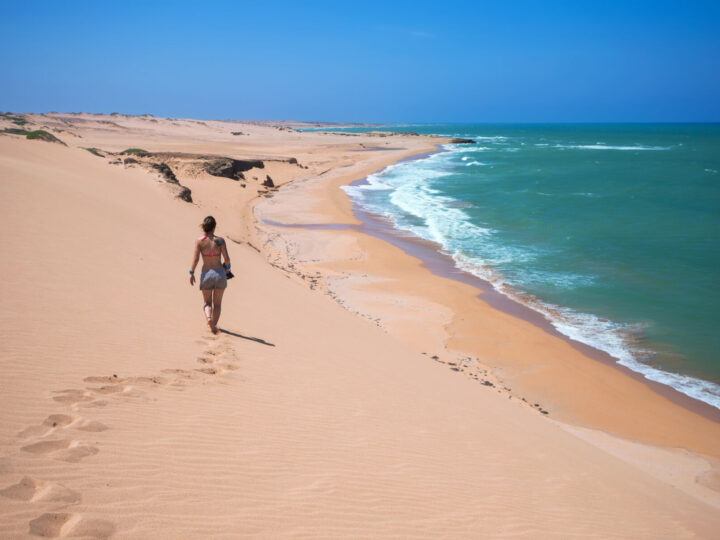
Mexico continues to dwarf South America for the sheer number of tourist arrivals, with Mexico City the most-visited capital in Latin America (the Dominican Republic is the second most-visited country). However, South American travel is slowly closing the gap.
1. Argentina
The top destination for international tourists in South America continues to be Argentina . In 2019, 7,399,000 travelers entered the country. The number of annual visitors rose sharply in 2010 and had since plateaued at around seven million.
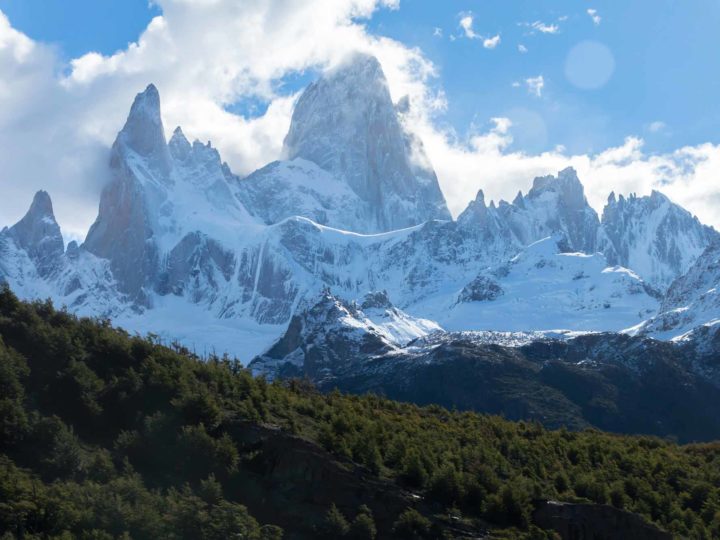
Its primary draws are the capital, Buenos Aires (and the presidential residence Casa Rosada), the Perito Moreno Glacier and Los Glaciares National Park in Patagonia (one of Argentina’s best national parks ), and Tierra del Fuego in the south, while it shares the Iguazu Falls with neighboring Brazil.
Visitors are drawn to the natural beauty of the Andes Mountains and windswept plains, and to the atmospheric streets of the capital, where there’s plenty to see and do if you’ve got a couple of days in Buenos Aires .
Planning Your Trip to South America?
Save time, stress & money with a customized travel itinerary planned for you by a South America expert
What previous clients have said:
Steph’s help laying out an itinerary for Chile was huge toward us having a great trip. She listened to our interests and compiled a framework that we could follow to make our plans. She included many practical tips as well as numerous options. She truly saved us many, many hours of research.
Argentina is one of the safest destinations in South America , but care should be taken in the capital as petty theft and robberies can occur. Make sure to be discreet with cash and valuables in cities and mind where you walk after dark; read our complete safety guide for Buenos Aires to get more tips.
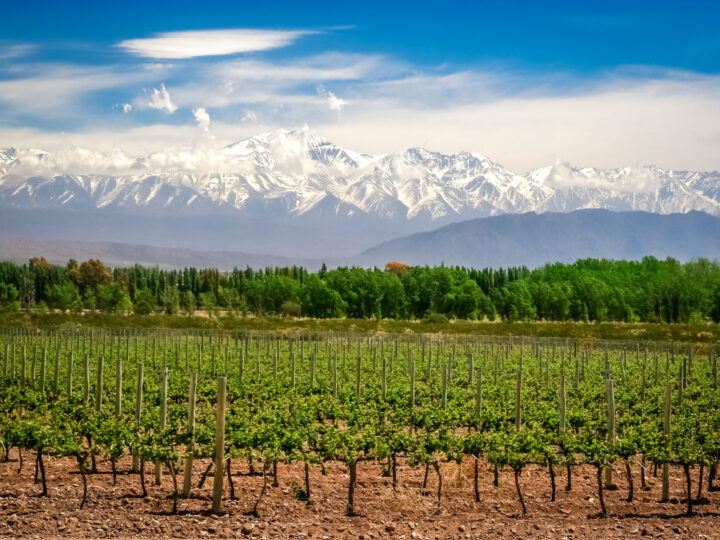
Although Argentina will continue to draw many visitors for its wonderful tourist attractions, Argentina’s economic woes and hyperinflation may cause instability in the coming years. As a result, other countries may become comparatively more popular for vacationers in the future.
Argentina economy update
The Argentine economy is a huge mess at the moment, with inflation expected to hit 200% this year. Using Argentine pesos can therefore be a nightmare – and mean you lose a lot of money. The blue dollar (an unofficial exchange rate that gives you a better conversion than the official rate) is around, but if you want to avoid carrying lots of cash, you can now pay using your credit card and get an exchange rate similar to the blue dollar rate. You must choose to pay in Argentine pesos (not USD!) to secure this rate.
Both Mastercard and Visa give you what is called the MEP rate, which is almost as good as the blue dollar rate. Mastercard will charge you the official rate but refund you the money a few days later; Visa will charge you the MEP rate from the beginning.
If you do want to have some Argentine pesos for paying in cash (which I highly recommend as you will need them for some restaurants and attractions), it’s best to use Western Union, whereby you send cash to yourself using the Western Union app and then withdraw it in Argentine pesos from one of their branches in Argentina. Bear in mind, those in El Calafate and Ushuaia can run dry of notes, so it can be easiest to do this in Buenos Aires.
Additionally, you can bring USD (unmarked and untorn hundred dollar bills), which you can exchange at “cuevas” (unofficial exchange houses). These will be able to give you the blue dollar rate and any hotel owner will be able to tell you where your nearest one is. Souvenir shops in most parts of the country will be able to give you pesos in exchange for dollar bills – although they might not give you the best rate.
Avoid cash machines. Currently, the maximum withdrawal is the equivalent of $15 USD in Argentine pesos and it will cost you $10 USD in fees.
Argentina’s neighbor and great rival, Brazil is the second most frequented country among tourists to South America. 2019 saw 6,353,000 international arrivals , and this number was consistent with preceding years beginning with the 2014 World Cup which they hosted.
Rio de Janeiro also hosted the 2016 Olympics, and tourism has been heavily promoted by the government in recent decades.
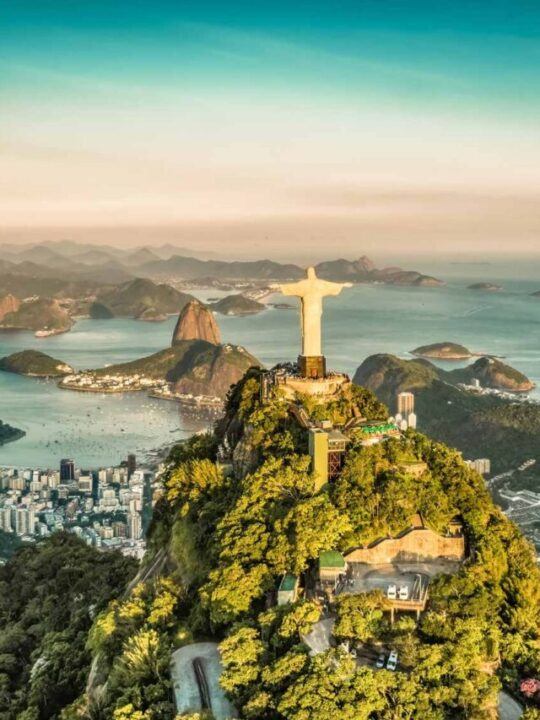
Visitors to Brazil come for the beautiful beaches, energetic cities of Sao Paulo and Rio de Janeiro (home to the iconic man-made attraction, the Cristo Redentor statue), and for many natural wonders, including the Amazon Rainforest and Iguazu Falls, undoubtedly one of the most incredible waterfalls in South America .
It’s also the largest country in South America and of all Latin American countries and is 0.84 times as big as the entire continent of Europe. Wow.
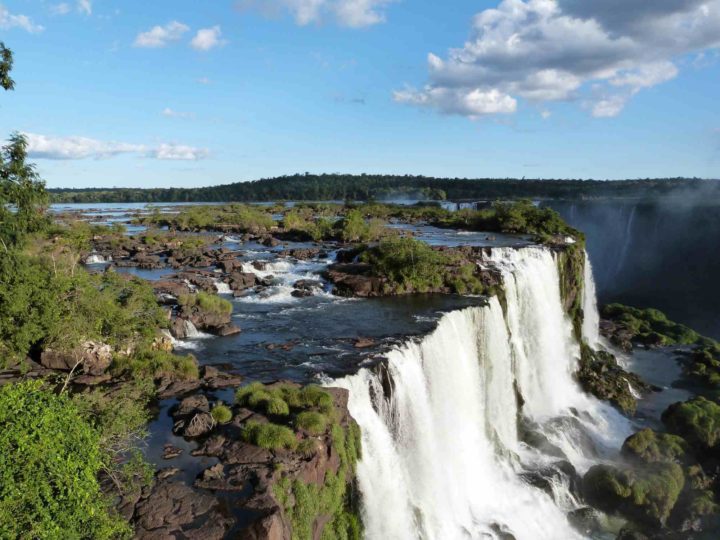
Some visitors may be put off by Brazil’s relatively high crime rates, but theft and robbery can usually be avoided by exercising common sense and minding your belongings. Always be aware of your surroundings and be sure to take a taxi or Uber after dark.
Brazil continues to be among the top tourist destinations in South American countries, and its cultural exports, particularly sports, music, and outgoing lifestyle, will undoubtedly attract new travelers to its tropical beaches and vibrant cities.
Third on our list of most visited countries in South America is Chile, with 5,431,000 visitors in 2019. Chile has only compiled data for incoming tourism since 2008, and has since seen a rapid rise in international tourism, with visitors more than doubling within nine years.
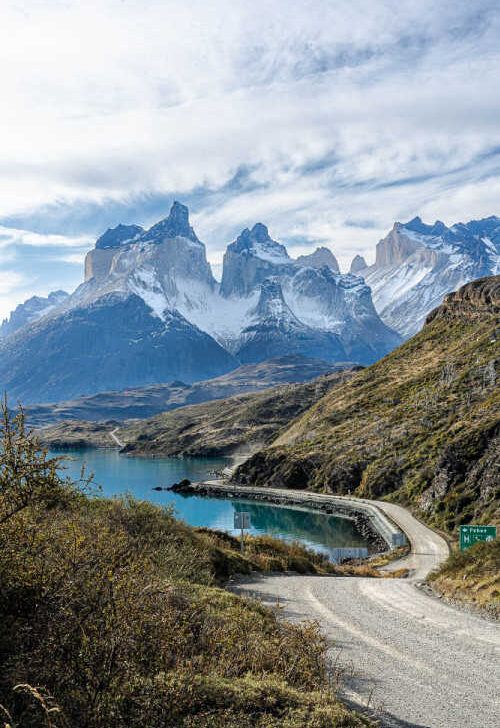
Visitors to Chile are drawn to the spectacular scenery at Torres del Paine National Park in the south, the Atacama Desert in the distant north, and Easter Island far offshore in the Pacific Ocean. Travelers can enjoy such varied activities as horseback riding, penguin, whale and sea lion spotting, and wine tasting.
The two years prior to Covid saw a steep decline in tourism, mainly caused by political turmoil and civil unrest. It is still safe to visit Chile, however, as it has a higher place on the global peace index than all countries on the continent except Uruguay, as of 2022.
That said, safety is becoming an increased issue in the capital, Santiago, and the nearby city of Valparaiso. In both, extreme caution should be taken at night time, when it’s safest to take a pre-booked taxi to restaurants. Read our other tips for staying safe in Chile .
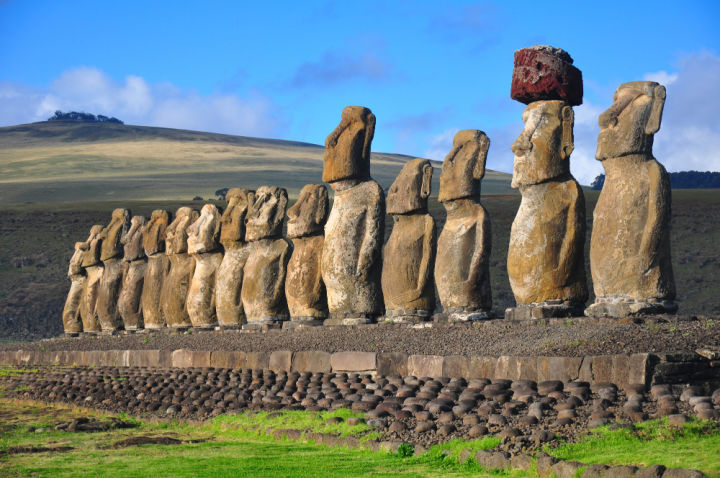
Indications since 2021 show renewed interest in Chile as a travel destination, both because of its unique range of natural wonders, and improved political stability. Visitor numbers are bound to increase in the upcoming years.
Coming in fourth for most visited destinations in South America, Peru welcomed 5,275,000 tourists in 2019. Since it began recording travel data in 2004, it has seen a consistent rise in foreign visitors.
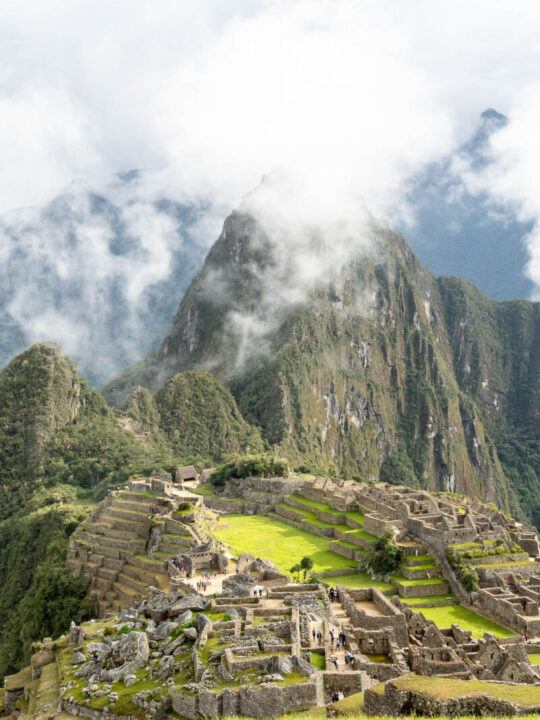
Peru has an alluring array of attractions for nature lovers and seekers of Unesco World Heritage sites, including the incomparable Machu Picchu and Inca Trail , Lake Titicaca – one of South America’s most incredible lakes – and countless ancient ruins and archeological sites in the far north of the country that are barely visited by most tourists.
The fascinating culture and spectacular scenery make Peru a life-affirming destination for many who visit.
As is the case in much of Latin America, care should be taken in urban areas, particularly Lima, but overall Peru sees little in the way of serious crime beyond occasional theft.
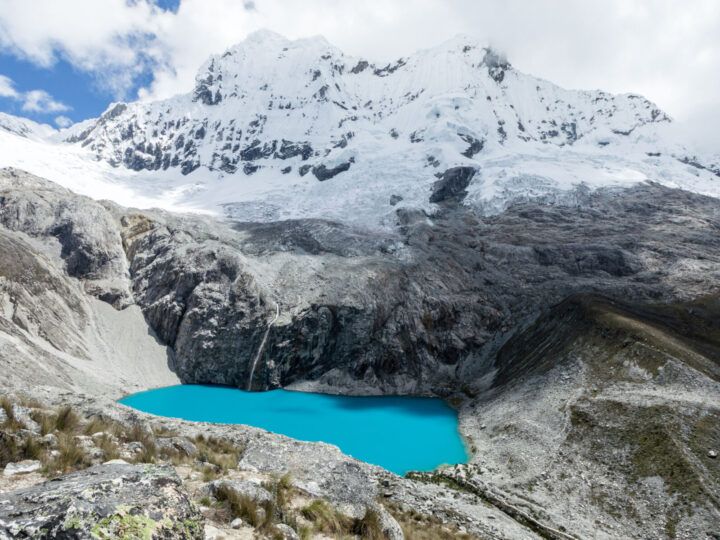
The past couple of years have been marked by political turmoil and the ousting of former president Pedro Castillo, but for the tourism industry, it has been business as usual since covid restrictions were lifted.
Because of Peru’s five-star attractions , tourists will continue to flock here as they discover there’s a whole lot more to see and do than Machu Picchu. Although political and economic unrest may have an effect in the future, for now, it seems tourism will remain unaffected.
5. Colombia
Next on our list is another emerging travel destination, Colombia , which had 4,531,000 visitors in 2019. Since the end of the 1990s, Colombia has seen a major increase in its number of visitors and is rapidly climbing the lists in Latin America.
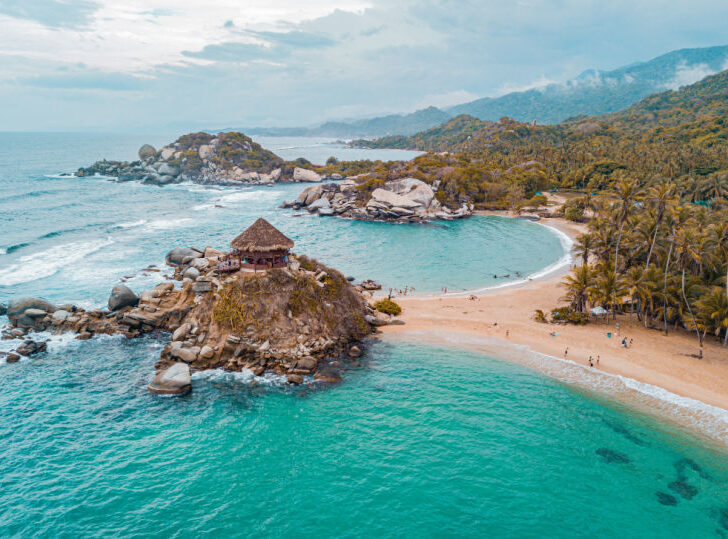
One of the most diverse countries on Earth, Colombia has something for all types of travelers (and particularly those on a budget, as it’s the cheapest country to visit in South America ).
The Caribbean region has plenty of enticing beach destinations (including Cartagena and Tayrona National Park along its Caribbean coast), its national parks have one-of-a-kind cloud forests, and its big cities have a vibrant energy and nightlife scene.
Since the dark days of drug cartels and narco-traffic being all over the news a couple of decades ago, Colombia has really come a long way. Violent crime rates have plummeted and most places in the country are secure for travel.
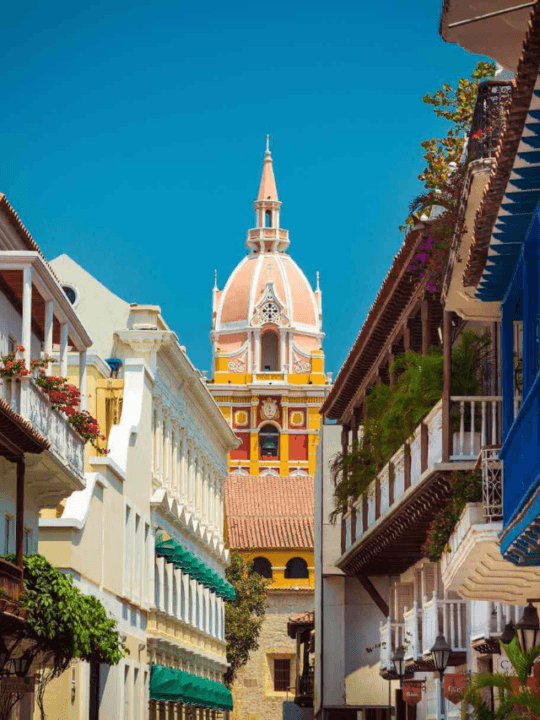
That said, major cities still have issues with theft and muggings, and it is important to exercise caution and common sense, particularly after dark.
Although Colombia has had a bad reputation in past decades, its improved security situation, welcoming local people, and astounding natural attractions stand to increase its popularity among international travelers in the coming years.
6. Paraguay
Wedged between Brazil, Argentina, and Bolivia, Paraguay admitted 4,368,000 international arrivals in 2019. This number is a bit misleading, as a high percentage of these visitors hop the border from Argentina or Brazil for cheaper shopping.
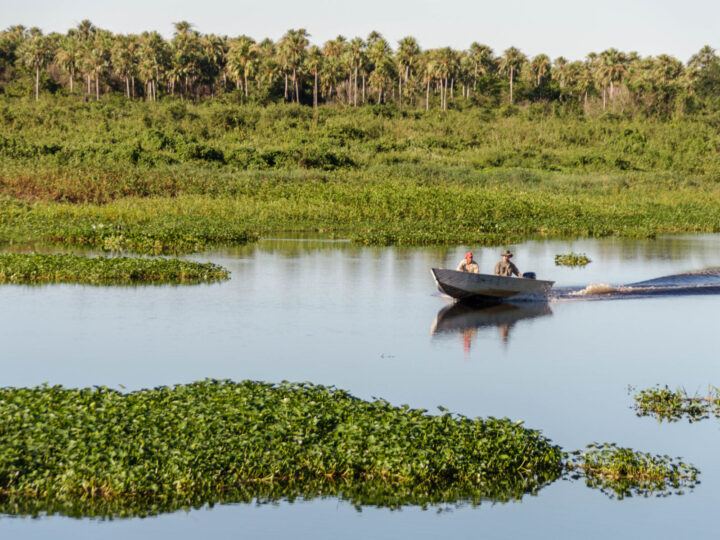
Arrivals sharply decreased since the mid-1990s into the new millennium, and only recently have numbers begun to increase again.
Visitors to Paraguay can enjoy huge areas of protected nature reserves, covering rainforests and plains with an amazing range of wildlife. Local culture, especially outside the urban areas, is influenced by the native Guarani, with the historic Jesuit Missions in the far south of the country an insight into the history of these indigenous people.
Visitors shouldn’t miss the Pantanal, which is far cheaper to visit here than in neighboring Brazil.
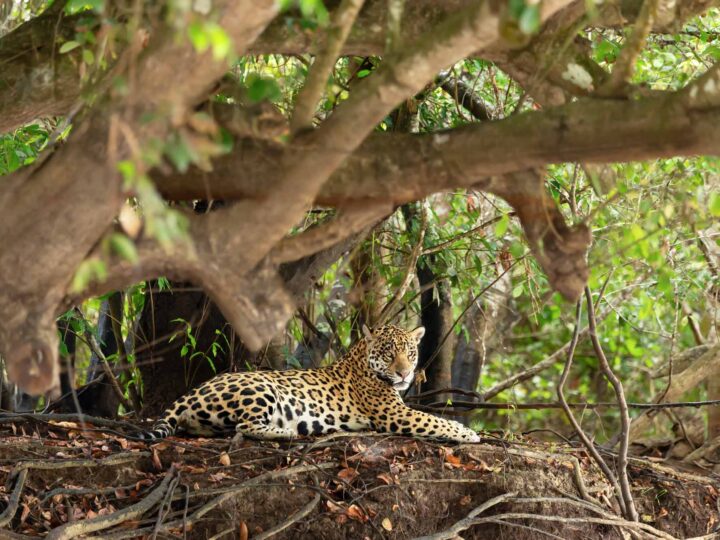
Paraguay is a safe destination with low violent crime rates, but travelers are advised to be discreet with valuables in urban areas and avoid wandering off the path in the national parks.
Although not a prime destination in the region, Paraguay will continue to see a rise in its number of visitors because of its unspoiled – and barely visited – natural landscapes, which include large swathes of the Chaco and Pantanal.
It is also far less expensive than its next-door neighbor, Argentina, and sees so few international visitors that you can be guaranteed to get off the well-beaten tourist path in Paraguay.
Just south of Brazil and next to Argentina, Uruguay had 3,480,000 visitors in 2019. International tourism has seen a steady increase in the past couple of decades, as its profile abroad has gained prominence.
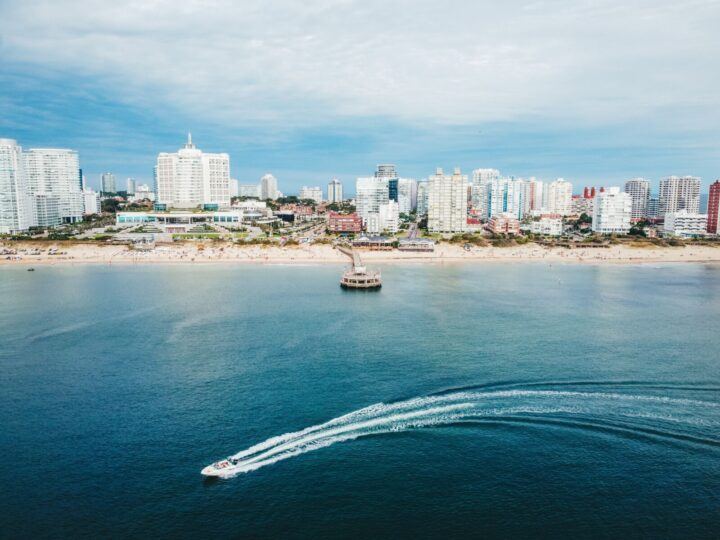
The country’s most famous draw is Punta del Este, the chic beach resort town frequented by the jet set.
Other visitors come for the estancias (horse and cattle ranches), as well as the vineyards, in the latter of which you can sample the country’s distinctively bold red wines made with Tannat grapes.
Uruguay is a very secure destination, and ranks highest in South America on the Global Peace Index, trailing only Costa Rica in Central America. Travelers should of course mind their belongings as theft is not unheard of in Montevideo and Punta del Este.

Because of its growing reputation as the most stable and democratic country in South America, high standard of living, and pleasant climate, both tourists and ex-pats will see Uruguay as a great place to travel in the present and future.
Another popular destination in South America, Ecuador welcomed 2,108,000 visitors in 2019. A growing number of visitors are long-term ex-pats from North America, but the number of tourists has been on the rise over the past couple of decades.
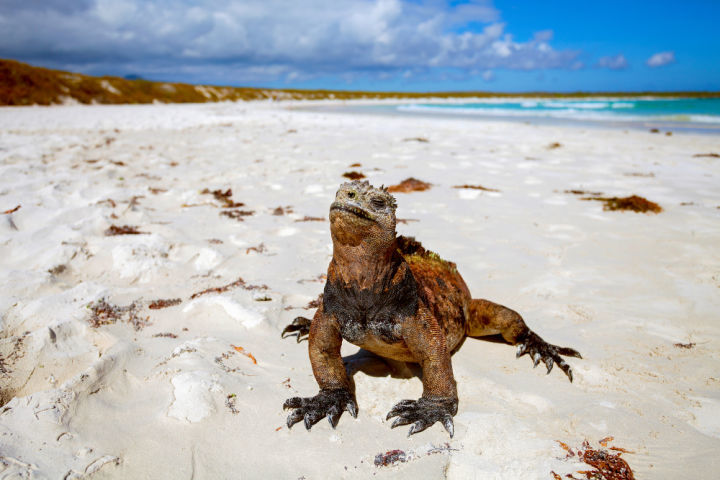
For a fairly small country, Ecuador is packed full of attractions, with the Galapagos Islands being its prime destination and making Ecuador one of the best countries to visit in South America for wildlife . T
ravelers can also visit the Amazon rainforest, towering active volcanoes, sandy beaches, and high-altitude Andean nature reserves, as well as same the country’s excellent cuisine, much of which is influenced by its Andean cultural heritage.
One of the safest countries in Latin America, Ecuador is politically stable. Travelers should take care to mind their valuables in the urban centers of Quito and Guayaquil, as theft and robbery can occur.
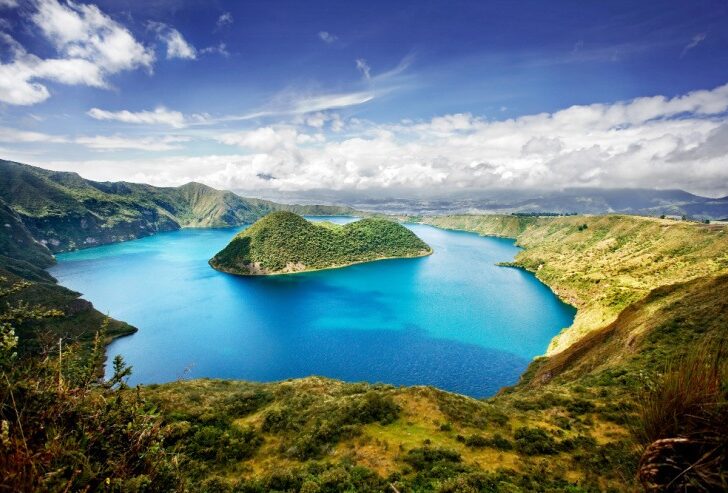
A rising star among South American travel destinations, Ecuador has long been known as the home of the Galapagos Islands but is now being discovered for its amazing biodiversity and range of ecosystems. Owing to its natural splendor, security, and colorful culture, its popularity among world travelers will only continue to rise.
Next on our list of the most visited destinations is Bolivia, which saw 1,239,000 visitors in 2019. Long considered an obscure backwater, Bolivia has seen a continuous rise in its number of international tourists over the last quarter century.
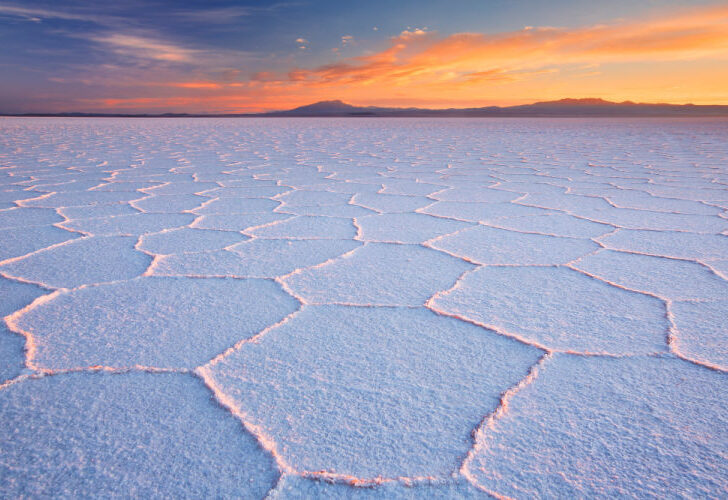
Long overshadowed by its neighbor to the west, Peru, Bolivia has emerged as a popular destination for its stark natural beauty.
Travelers can see the eastern half of Lake Titicaca, the world’s largest salt flats, the Salar de Uyuni , the world’s highest capital, La Paz , and the historic center of Sucre , one of South America’s loveliest colonial cities.
Although Bolivia has been in the news for political instability, the country is secure for tourists and violent crime is rare. Take care after dark in La Paz to take a taxi or Uber to your destination.
Because of the dizzying altitude, visitors arriving in La Paz should take time to acclimate and make sure to keep hydrated.
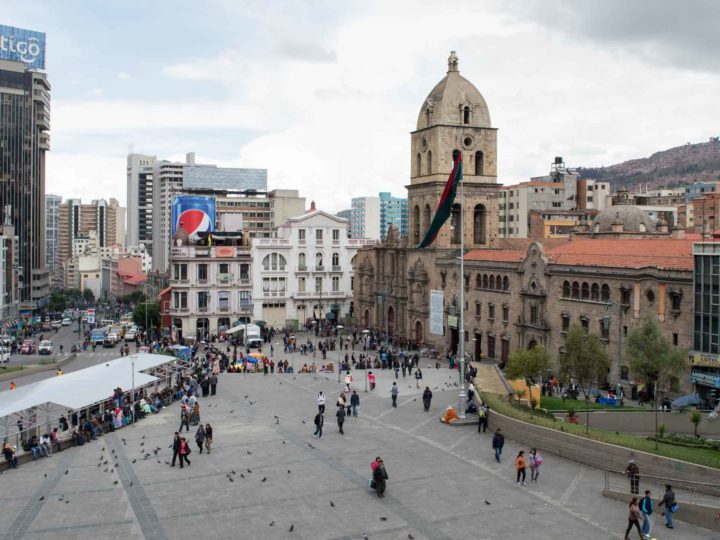
With its stark natural beauty and unique Andean culture, tourism in Bolivia has really taken off in recent years. Indications are that more people will discover its charms and unique attractions in the coming years, and now is a great time to experience Bolivia while it’s still under the radar.
10. Venezuela
Because of a lack of recent official data, it’s difficult to definitively place Venezuela in these rankings, but 2017 saw 429,000 international arrivals , placing it tenth in South America. The number of tourists in Venezuela has seen a sharp decline over the past decade.
With its sun-drenched Caribbean coast, the northernmost reaches of the Andes Mountains, and Angel Falls (the world’s tallest waterfall), Venezuela has some top draws for the intrepid traveler.
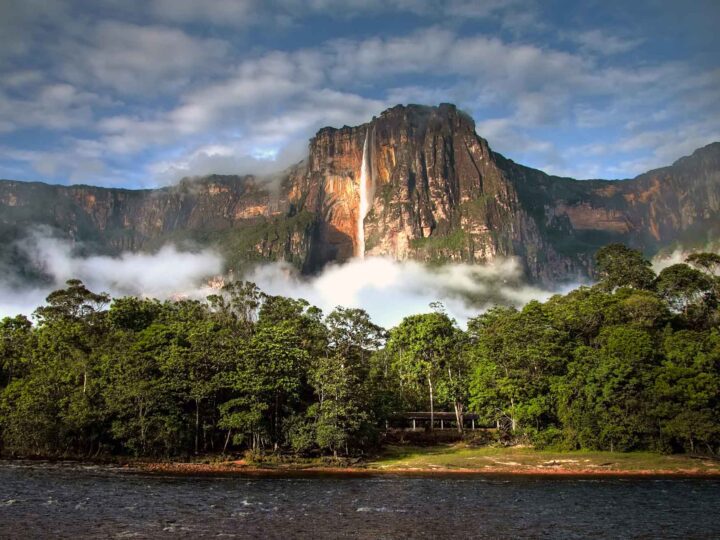
Recent years have seen political and economic upheaval, and visiting has become much less straightforward than in years past. Although there are no official travel restrictions for entry, the U.S. Department of State has placed a Level 4 travel advisory on Venezuela and advises against non-essential travel.
If planning to visit, it is advised to choose a reputable travel agency, as kidnappings of independent travelers have occurred.
Unfortunately, because of ongoing turmoil Venezuela will not be a popular travel destination in the near future. However, for those willing to prepare and join a pre-arranged tour, it remains open for travel.
Last on our list is the small country of Guyana. Virtually unknown to most travelers, Guyana had just 315,000 visitors in 2019. This, however, is more than double what it was a decade earlier.
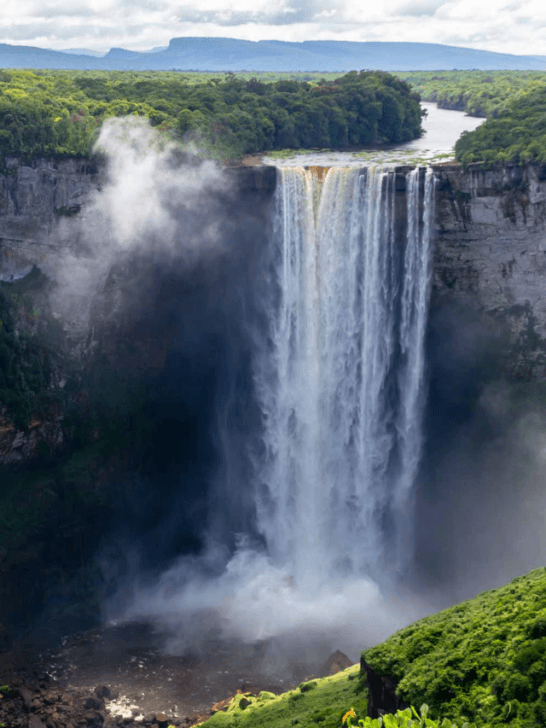
Guyana has become a top destination in South America for its unspoiled primary forests and large nature reserves. The variety of wildlife is exceptional (and the chances of spotting endemic creatures high), much of the territory is home to unspoiled rainforest, and unique among South American countries, English is the official language.
A secure destination, travelers won’t need to worry too much about crime, but should make sure to come vaccinated for yellow fever and malaria.
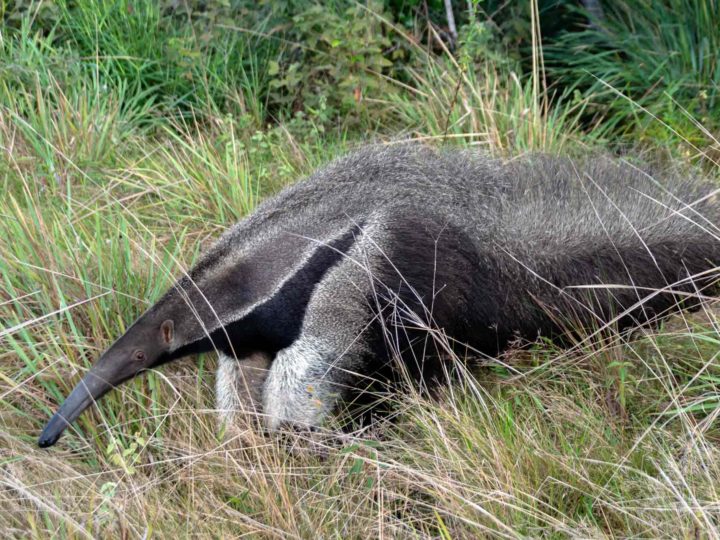
Visiting with a tour operator is recommended, due to a lack of travel infrastructure in much of the country, as well as many of the most interesting accommodations and attractions being situated in remote and hard-to-reach places.
With its readily accessible nature reserves and beautiful landscape, Guyana will increase in popularity for those seeking an off-the-beaten-path adventure. Read our guide to the most unmissable tourist attractions in Guyana .
Inspired to explore South America? Read out guide to the most incredible places to visit in South America , plan your trip with our extensive itineraries , and discover when’s the best time to explore South America.
Latin America Travel Market Size - Industry Report on Share, Growth Trends & Forecasts Analysis (2024 - 2029)
The Report Covers Latin America Travel and Tourism Industry Growth & Analysis and It is Segmented by Type (international Tourism and Domestic/Local Tourism), Purpose (adventure Tourism, Business Travel, Conference or Seminar Travel and Family, Friends Visit), and Country (Brazil, Mexico, Colombia, Chile, Argentina, and Rest of Latin America) the Report Offers Market Size and Forecasts for Opportunities in the Latin America Travel and Tourism Industry in Value (USD) for all the Above Segments.
Latin America Travel & Tourism Market Size
Single User License
Team License
Corporate License
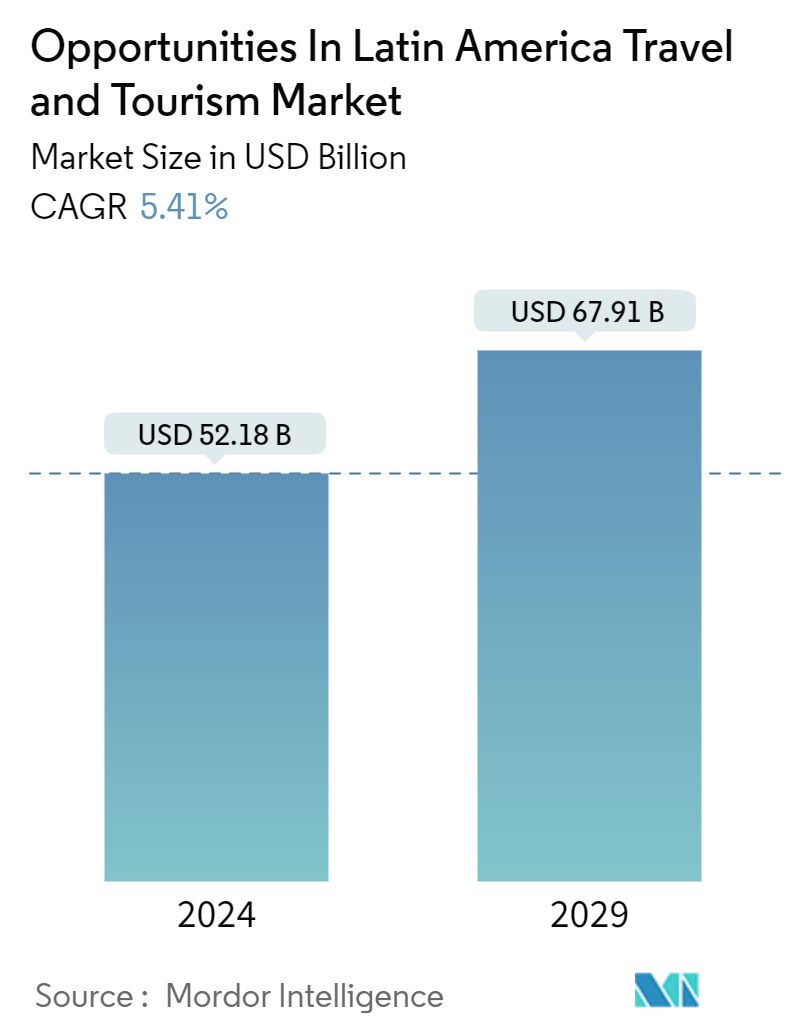
Need a report that reflects how COVID-19 has impacted this market and its growth?
Latin America Travel & Tourism Market Analysis
The Opportunities In Latin America Travel And Tourism Market size is estimated at USD 52.18 billion in 2024, and is expected to reach USD 67.91 billion by 2029, growing at a CAGR of 5.41% during the forecast period (2024-2029).
The Latin America Travel and Tourism Market has experienced significant growth, with projections indicating continued expansion during the forecast period. This growth is fuelled by factors such as the increasing internet penetration across the region, which facilitates easier access to travel information and booking platforms. Additionally, improving economic conditions in many countries have resulted in heightened disposable incomes and a growing middle class, encouraging domestic and international travel. Argentina and Brazil are notable contributors to outbound travel growth, particularly favouring destinations within the Americas, thus driving the overall expansion of the tourism sector.
In this dynamic landscape, numerous opportunities abound for stakeholders in the travel and tourism industry. Leveraging the power of digital platforms for marketing and booking services presents a promising avenue for capturing the growing demand for travel experiences. Additionally, targeted promotional efforts showcasing the rich cultural heritage and natural wonders of Latin America can attract a broader spectrum of visitors. Investing in infrastructure development to improve accessibility to remote destinations holds the potential to unlock new tourism hotspots and sustain the market's upward trajectory. By capitalizing on these opportunities, businesses can position themselves to thrive in the evolving Latin American travel and tourism market.
Latin America Travel & Tourism Market Trends
Rising tourism industry investment affecting latin america travel and tourism industry..
In Latin America, tourism became one of the most important contributors to economic development, job creation, and environmental protection. International tourist arrivals increased by 7%, according to the World Tourism Organization (UNWTO).
Latin America stands out as a travel destination. Countries like Mexico, Peru, Colombia, Chile, and Argentina made new investments, and new international travel players, such as Norwegian Airlines, are emerging in the region. UNWTO forecasts that Latin America will receive 78.2 million tourists by 2027, generating USD 82 billion for the local economy. Latin America emerges as a prominent travel hub, with nations like Mexico, Peru, Colombia, Chile, and Argentina witnessing a surge in investments. Additionally, the region is witnessing the rise of new international travel players, like Norwegian Airlines. Projections from UNWTO indicate that by forecasted year, Latin America is set to welcome a staggering 78.2 million tourists, contributing a substantial USD 82 billion to the local economy.
The rise of the middle class is one of the most important achievements regarding economic expansion in Latin America. The reduction of poverty allowed people to see further and comprise other perspectives on their own lives. Economic growth plays a big role when talking about the growth of the outbound travel market. It means that the rise of the middle class slowly opens up opportunities for people who could barely get by just a few years ago. Most Latin American countries experienced an economic slowdown over the past few years. However, tourists keep searching for outbound destinations worth the trip inside and outside Latin America.
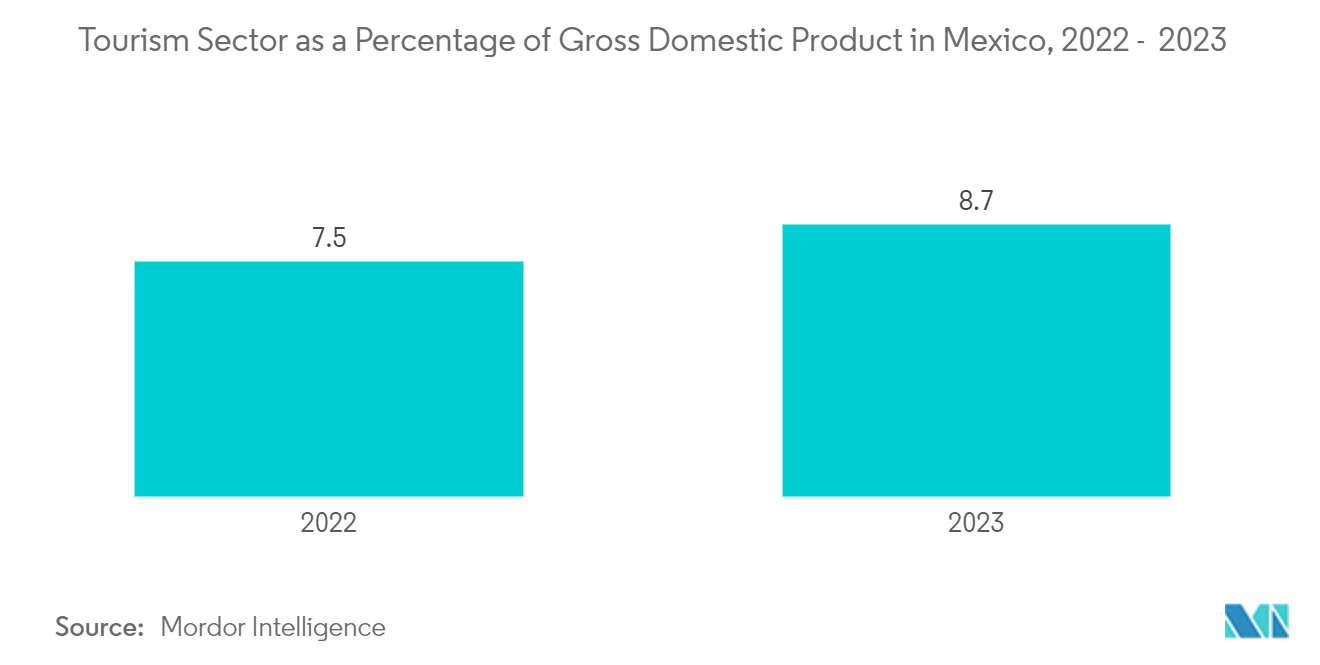
Leading Latin American countries affecting Travel and Tourism Industry
Mexico, Chile, Brazil, Costa Rica, Uruguay, Colombia, Panama, Argentina, Peru, Ecuador, and the Dominican Republic are among the leading countries for tourism in Latin America. Based on the Travel and Tourism Development Index, Mexico and Chile leads Latin American countries with an index of 4.3.
Home to iconic landmarks like Rio de Janeiro's Christ the Redeemer statue and the Amazon rainforest, Brazil is a major tourist destination in Latin America. The country hosts cultural events like the Rio Carnival and offers diverse attractions, including pristine beaches, ecotourism opportunities, and vibrant nightlife in cities like São Paulo and Salvador. Argentina's diverse landscapes, including the Andes Mountains, Patagonia, and the Iguazu Falls, attract outdoor enthusiasts and nature lovers from around the world. Buenos Aires, the capital city, is known for its European-style architecture, tango dance culture, and culinary delights, making it a popular tourist destination. Renowned for its biodiversity, eco-tourism initiatives, and commitment to sustainability, Costa Rica appeals to nature lovers and adventure seekers. The country offers diverse ecosystems, including rainforests, volcanoes, and beaches, as well as opportunities for activities such as zip-lining, wildlife viewing, and surfing. Home to the ancient Inca ruins of Machu Picchu, Peru is a bucket-list destination for history enthusiasts and cultural travellers.
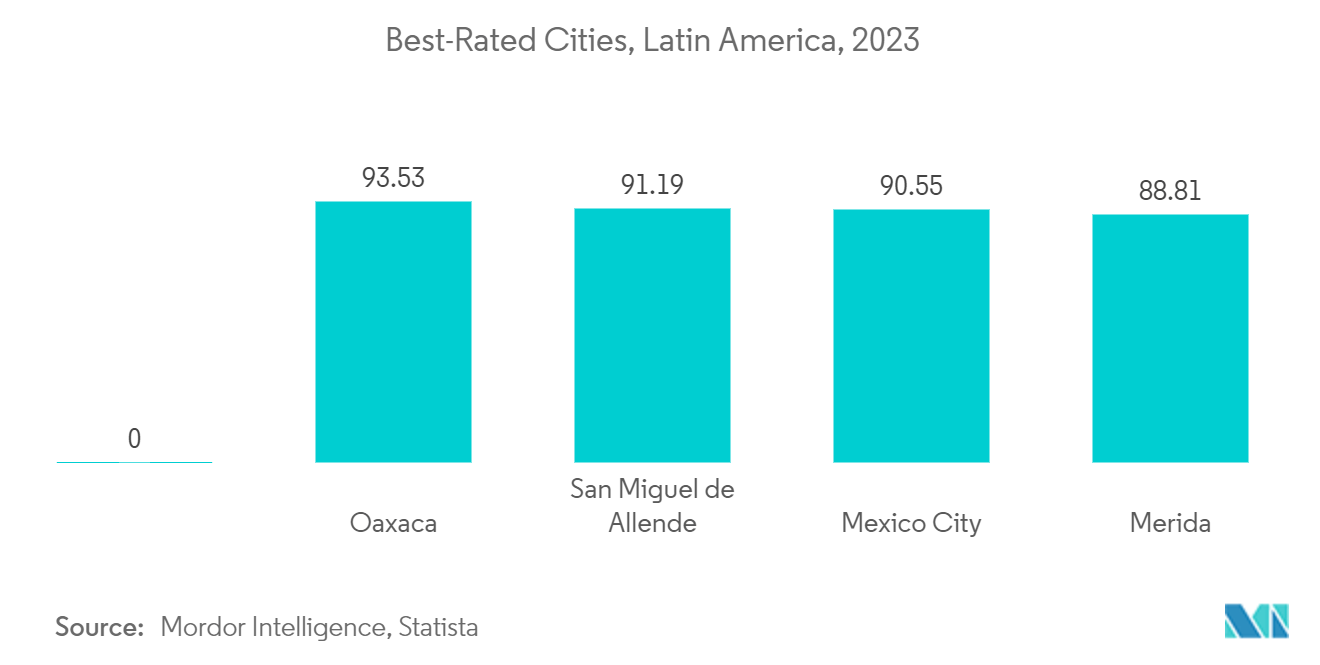
Latin America Travel & Tourism Industry Overview
The unstable economic and political situation in many Latin American and Caribbean countries and regions' popularity as attractive destinations for travelers are affecting tourism and travel in the region. The Latin America Travel and Tourism industry includes players active from international markets like North America and Australia competing with local travel and tour operators.
Brazil, Mexico, Colombia, Argentina, and Chile are leading in online travel start-ups with existing start-ups of 164,79,65,52, and 45, respectively, during 2022 in these Latin American Countries. Mariott International, Hilton Worldwide, Acor Hotels, InterContinental Hotels Group, and Hyatt are leading Hotel Franchise companies in Latin America.
Latin America Travel & Tourism Market Leaders
Latin American Escapes, Inc.
Central America Journeys
Latin America Travel
Cox & Kings
*Disclaimer: Major Players sorted in no particular order

Latin America Travel & Tourism Market News
- In January 2024, Trip.com Group and LATAM Airlines signed a new NDC agreement. Both companies have reached an agreement to give international travellers a contemporary and effective ticketing experience.
- In January 2023, UNWTO and the Development Bank of Latin America (CAF) have established a new partnership to encourage and maintain investment in tourism throughout Latin America and the Caribbean regions. As part of the collaboration, investment guides for tourism are being created for five nations, Uruguay, Barbados, Ecuador, El Salvador, and Panama.
Latin America Travel & Tourism Market Report - Table of Contents
1. INTRODUCTION
1.1 Study Deliverables
1.2 Study Assumptions
1.3 Scope of the Market
2. RESEARCH METHODOLOGY
3. EXECUTIVE SUMMERY
4. MARKET INSIGHTS AND DYNAMICS
4.1 Market Overview
4.2 Market Drivers
4.3 Market Restraints
4.4 Porter's Five Forces Analysis
4.4.1 Bargaining Power of Suppliers
4.4.2 Bargaining Power of Buyers/Consumers
4.4.3 Threat of New Entrants
4.4.4 Threat of Substitute Products
4.4.5 Intensity of Competitive Rivalry
4.5 Impact of COVID-19 on the Market
5. MARKET SEGMENTATION
5.1 By Type
5.1.1 International Tourism
5.1.2 Domestic Tourism
5.2 By Purpose
5.2.1 Adventure Tourism
5.2.2 Business Travel
5.2.3 Conference or Seminar Travel
5.2.4 Family, Friends Visit
5.3 By Country
5.3.1 Brazil
5.3.2 Mexico
5.3.3 Colombia
5.3.4 Chile
5.3.5 Argentina
5.3.6 Rest of Latin America
6. COMPETITIVE LANDSCAPE
6.1 Market Concentration Overview
6.2 Company Profiles
6.2.1 Tangol SRL
6.2.2 Latin American Escapes, Inc.
6.2.3 Condor Travel
6.2.4 Central America Journeys
6.2.5 Latin American Travel
6.2.6 Cox & Kings Travel
6.2.7 South America Odyssey
6.2.8 Mariott International
6.2.9 Hilton Worldwide
6.2.10 Inter Continental Hotels
6.2.11 Hoteis Angola
6.2.12 Eco Hotels & Resorts
6.2.13 Mobibrasil*
- *List Not Exhaustive
7. MARKET OPPORTUNITIES AND FUTURE TRENDS
Latin America Travel & Tourism Industry Segmentation
" The travel and Tourism Industry is a network of commercial and non-commercial organizations that serve the needs of travelers and tourists during their journey.
The Latin America travel and tourism industry is segmented by type, purpose, and country. By type, the market is sub-segmented into international tourism and domestic/local tourism. By purpose, the market is sub-segmented into adventure tourism, business travel, conference or seminar travel, and family friend visits. By country, the market is sub-segmented into Brazil, Mexico, Colombia, Chile, Argentina, and rest of Latin America. The report offers market size and forecasts of the Latin America travel and tourism industry in value (USD) for all the above segments.
Latin America Travel & Tourism Market Research FAQs
How big is the opportunities in latin america travel and tourism market.
The Opportunities in Latin America Travel and Tourism Market size is expected to reach USD 52.18 billion in 2024 and grow at a CAGR of 5.41% to reach USD 67.91 billion by 2029.
What is the current Opportunities in Latin America Travel and Tourism Market size?
In 2024, the Opportunities in Latin America Travel and Tourism Market size is expected to reach USD 52.18 billion.
Who are the key players in Opportunities in Latin America Travel and Tourism Market?
Latin American Escapes, Inc., Tangol SRL, Central America Journeys, Latin America Travel and Cox & Kings are the major companies operating in the Opportunities in Latin America Travel and Tourism Market.
What years does this Opportunities in Latin America Travel and Tourism Market cover, and what was the market size in 2023?
In 2023, the Opportunities in Latin America Travel and Tourism Market size was estimated at USD 49.36 billion. The report covers the Opportunities in Latin America Travel and Tourism Market historical market size for years: 2020, 2021, 2022 and 2023. The report also forecasts the Opportunities in Latin America Travel and Tourism Market size for years: 2024, 2025, 2026, 2027, 2028 and 2029.
How is Latin America Travel and Tourism Market segmented?
Latin America Travel and Tourism Market segmented by a) Type: International Tourism and Domestic Tourism b) Purpose: Adventure Tourism, Business Travel, Conference or Seminar Travel Family and Friends Visit
Our Best Selling Reports
- 3D Sensor Market
- Business Process Outsourcing Market
- Force Sensors Market
- High Speed Cameras Market
- Industrial Air Compressor Market
- Netherlands E-commerce Market
- Newspaper Market
- Synchronous Motor Market
- US e-commerce Market
- Waste Management Market
Latin America Travel and Tourism Industry Report
The Latin America travel and tourism market has demonstrated robust growth, driven by factors such as the rise of the middle class, enhanced internet penetration, and improved economic conditions boosting disposable incomes. This diverse market includes segments like airlines, hotels, resorts, and online travel platforms, catering to various travel types such as leisure, business, and adventure tourism. Key regions like Brazil, Mexico, and Argentina are crucial, offering cultural festivals, natural wonders, and historical sites that attract international visitors. Market dynamics are shaped by increasing digitalization, simplifying travel planning and booking, alongside a growing preference for sustainable tourism practices. Despite challenges like political and economic instability, the market presents opportunities in adventure and culinary tourism, and potential growth in medical tourism. Latin America tourism statistics highlight the significant impact and scope of the tourism market, with ongoing trends and future potential underscored by Mordor Intelligence™ Industry Reports, which provide a market forecast outlook and historical overview. Get a sample of this industry analysis as a free report PDF download to explore detailed insights into the market share, size, and revenue growth rate of Latin America Travel and Tourism.
Latin America Travel and Tourism Market Report Snapshots
- Latin America Travel and Tourism Market Size
- Latin America Travel and Tourism Market Share
- Latin America Travel and Tourism Market Trends
- Latin America Travel and Tourism Companies
- Latin America Travel and Tourism News
Please enter a valid email id!
Please enter a valid message!

Opportunities In Latin America Travel And Tourism Market Get a free sample of this report
Please enter your name
Business Email
Please enter a valid email
Please enter your phone number
Business Email *
Company Name *
Please enter a company name
Get this Data in a Free Sample of the Opportunities In Latin America Travel And Tourism Market Report
Please enter your requirement

Thank you for choosing us for your research needs! A confirmation has been sent to your email. Rest assured, your report will be delivered to your inbox within the next 72 hours. A member of our dedicated Client Success Team will proactively reach out to guide and assist you. We appreciate your trust and are committed to delivering precise and valuable research insights.
Please be sure to check your spam folder too.
Sorry! Payment Failed. Please check with your bank for further details.
Add Citation APA MLA Chicago
➜ Embed Code X
Get Embed Code
Want to use this image? X
Please copy & paste this embed code onto your site:
Images must be attributed to Mordor Intelligence. Learn more
About The Embed Code X
Mordor Intelligence's images may only be used with attribution back to Mordor Intelligence. Using the Mordor Intelligence's embed code renders the image with an attribution line that satisfies this requirement.
In addition, by using the embed code, you reduce the load on your web server, because the image will be hosted on the same worldwide content delivery network Mordor Intelligence uses instead of your web server.
- Search Please fill out this field.
- Manage Your Subscription
- Give a Gift Subscription
- Newsletters
- Sweepstakes
- Destinations
- Central & South America
25 Best Places to Visit in South America, From the Wetlands of Brazil to Easter Island
Experts share their favorite spots across the continent.
Harrison Pierce is a freelance writer and digital nomad passionate about personal finance and travel. He is traveling full-time with the help of points and miles and enjoys connecting with people on the ground. His work has been published in Travel + Leisure, Condé Nast Traveler, USA Today Blueprint, Matador Network, and other publications.
Gabriel_Amaral/Getty Images
As a digital nomad who works and travels full time, I spend a good portion of the year in South America, exploring countries including Argentina, Brazil, Chile, Colombia, Uruguay, and Peru. From cosmopolitan cities and mountain villages to beautiful beaches and iconic landmarks, the continent offers countless incredible destinations and sights.
It can be challenging to narrow down the choices for a South American trip. With the help of Elisban Huarancca, an official tourism guide with Journeys Cusco in Peru, Eva Castro, owner of Creo Ecolodge in Jardin, Colombia, and Alexander Balardjischvili, CEO of C2Rio Tours & Travel , we’ve compiled a list of the 25 best places to visit in South America.
- Best tourist destination: Machu Picchu, Peru
- Underrated hidden gem: Jardín, Antioquia, Colombia
- Best for families: Buenos Aires, Argentina
- Best for couples: Valparaíso, Chile
- Best for solo travelers: Galápagos Islands, Ecuador
Read on for the full list of unmissable spots for your South American itinerary.
Machu Picchu, Peru
Rory Fuller/Travel + Leisure
Arguably one of the most famous places in the world, Machu Picchu is unlike anything you’ve ever seen. The site was initially an Inca citadel, likely built in the 1450s and often called “The Lost City of the Incas.” Machu Picchu is about 50 miles from Cusco; you’ll take a train to Aguas Calientes and then a bus to the site. You can't visit without a tour guide, so make reservations well in advance. “The visit to Machu Picchu can be all year round; different climatic factors help to understand the mysterious nature of Machu Picchu,” says Huarancca. However, if you're hoping to avoid rain, he recommends timing your visit between April and the end of October.
Jardín, Antioquia, Colombia
reisegraf/Getty Images
Jardín is a small town a few hours south of Medellín with colonial architecture, beautiful scenery, and lots to do. I stayed at Creo Ecolodge during my trip, and Castro offered plenty of recommendations. Take a tour of Cueva del Esplendor, the "Cave of Splendor," where you'll find a beautiful waterfall, or head to a nearby coffee farm to learn how Colombian coffee is produced. My favorite is Cafe Historias , which has some of the best coffee I’ve ever tasted. Castro says the best time of year to visit is August and September when there are very few travelers. This is also when the annual Jardín Film Festival takes place. It gets much busier in town from December through April, she adds.
Buenos Aires, Argentina
Lauren Breedlove/Travel + Leisure
In Buenos Aires , one of my favorite cities in the world, you can find anything from tango shows and street art to the best steak you’ll ever eat. Each neighborhood has something special. Head to La Boca for beautiful murals along the streets, then tour the famous cemetery in Recoleta before stopping at a speakeasy in Palermo. There’s no shortage of fantastic things to do , and the city makes a wonderful home base for seeing more of Argentina.
Valparaíso, Chile
Patrick Donovan/Getty Images
Less than a two-hour drive from Santiago, this quirky coastal city was once home to 20th-century poet and diplomat Pablo Neruda. Valparaíso is characterized by its eclectic, colorful hillside houses, antique funiculars, and sweeping ocean views. Plus, it's adjacent to Viña del Mar, where you'll find some of Chile's top beaches.
Galápagos Islands, Ecuador
Andrew Peacock/Getty Images
The Galápagos Islands are perfect for nature lovers. Visitors can learn about the archipelago's unique biodiversity, go scuba diving, lounge on beaches, or embark on a multi-island cruise. You might also swim with sea lions or hang out with giant turtles.
Cocora Valley, Salento, Colombia
jmichaelmedia/Getty Images
Due west of Bogota is Cocora Valley, one of Colombia's most famous hiking destinations. You can take a day trip from the nearby town of Salento or do a multiday hike throughout the valley. There are campsites available for use if you choose to spend the night looking at the stars. It’s famous for having the tallest palm trees in the world, which stand around 200 feet tall and can live up to 200 years. The oversaturated green colors of the hills are stunning. Castro highly recommends going at "golden hour," early in the morning or late in the afternoon, for the best views.
The Rock of Guatapé, Colombia
Jens Otte/Getty Images
The town of Guatapé in northern Colombia, directly east of Medellín, is famous for its namesake Rock, which can be ascended via more than 700 steps. At the end of your climb, you'll be rewarded with sweeping views of the town and the islands in the sprawling Peñol-Guatapé Reservoir. The town is reachable by bus and less than two hours from Medellín, making it a perfect weekend trip. “The people here are more welcoming and warm,” says Castro. “When you are walking, you can find many smiling faces … It’s part of our culture.”
San Rafael, Antioqua, Colombia
Simaguang/Getty Images
San Rafael is excellent “if you really want to have the deepest connection with yourself and with nature,” says Castro. She recommends Vanadurga Ashram , a yoga sanctuary, for a retreat or to continue your practice while traveling here. “These places are really magical, and you can learn how to change your perspective," Castro adds.
San Rafael is known for its natural beauty, including mountains, waterfalls, and rivers. You can bird-watch, hike, or simply soak in nature. “People want to come to have an inner journey,” says Castro. “If that’s your goal — to find out something inside of you — I’d recommend places like San Rafael.”
The Lost City, Magdalena, Colombia
PetraKosonen/Getty Images
The Lost City, or Ciudad Perdida in Spanish, is located near Santa Marta in northern Colombia. It’s estimated to have been founded in the eighth or ninth centuries, making it hundreds of years older than Machu Picchu. The area is believed to have been home to around 2,000 people and about 170 terraces, with apparent spaces for living, working, and religious practice. Getting there requires a three- to six-day trek with a tour company. On the way, you'll see rare native plants and wildlife, which is an adventure in itself.
Cusco, Peru
PocholoCalapre/Getty Images
If you're interested in Inca ruins, Cusco is the perfect place. It makes a great starting point to reach Machu Picchu, but you can also see traces of the city's Incan origins alongside colonial architecture. Many travelers spend a few days here exploring and acclimating to the 11,150-foot elevation. (As a comparison, Denver has an elevation of 5,280 feet.) The winding streets, Baroque churches, and art and history museums will leave you charmed.
Rainbow Mountain, Vinicunca, Peru
maylat/Getty Images
Close to Cusco in the Andes Mountains is Vinicunca, also known as Rainbow Mountain because of the colorful stripes on display year-round. The colors result from different mineral layers that were combined with melted ice to create rows of reds, yellows, purples, and greens.
Amazon Rain Forest, Peru
JarnoVerdonk/Getty Images
The Amazon rain forest spans eight countries and is almost 2.6 million square miles in size. You can visit the Peruvian Amazon from three areas: Manú National Park , Tambopata Province, and the city of Iquitos. Each provides something unique to tourists. The best option depends on what you want to see, how much time you can spend, and your budget. “The only recommendation I can give to international travelers is to make reservations in advance and have good information about the places you will visit,” says Huarancca. “It is necessary to find out the type of food, drinks, and traditions that place has.”
Huacachina, Peru
Istvan Kadar Photography/Getty Images
Huarancca recommends visiting Huacachina, “a small oasis in the middle of the desert.” Located south of Lima and near the city of Ica, it's a desert village complete with rolling sand dunes on all sides. You can't swim in Huacachina Lagoon, but you can rent paddleboats to glide across the water. It’s the only natural oasis in all of South America, formed by underground aquifers.
Colca Canyon, Peru
Caroline Brundle Bugge/Getty Images
In Peru, Colca Canyon is another tourist attraction that you shouldn't miss, according to Huarancca. It’s one of the world’s deepest canyons (twice as deep as the Grand Canyon) and you can take a day trip from Arequipa to see it or tackle a multiday trek for the most spectacular views. Either way, you're likely to see plenty of native wildlife and breathtaking scenery.
Lake Titicaca, Peru and Bolivia
Didier Marti/Getty Images
Lake Titicaca straddles two South American countries and is the largest freshwater lake on the continent, as well as the world's highest navigable lake. It’s an estimated three million years old, and contains human-made islands constructed of layers of tortora roots and reeds. The number of islands varies at any given time but is usually somewhere between 60 and over 100. This place is extremely important to Peruvian and Bolivian indigenous communities, and offers some of the best views in the Andes.
Uyuni Salt Flat, Bolivia
Chris VR/Travel + Leisure
Originally a prehistoric lake that went dry, Bolivia's salt flats are the largest in the world. Now Uyuni Salt Flat is around 4,200 square miles of striking white salt and rock formations. If you visit between December and April, which is the rainy season, you may see bright pink flamingos. Many people who have visited when water is on the ground describe the experience as walking on a cloud since the sky is reflected in the water. Book a room at Luna Salada Hotel , which is close to the flat and made of salt, for a very special stay.
Pantanal Wetland, Brazil
micsmt/Getty Images
Measuring more than 40 million acres, this is the biggest wetland on earth. Brazil's Pantanal Wetland is also one of the most biodiverse destinations on the planet with more than 4,700 plant and animal species, including jaguars and crocodiles. Balardjischvili recommends “bringing insect repellent, a light raincoat, and a sweatshirt — and always hydrate.”
Petrópolis, Brazil
diegograndi/Getty Images
A royal summer retreat in the 19th century, Petrópolis is a mountain resort city outside of Rio de Janeiro known for its palaces, architecture, and food. “Visit Petrópolis on a guided tour to enjoy the historical aspect," Balardjischvili says. "Always book your tour [with] legalized companies with good reviews."
Christ the Redeemer, Rio de Janeiro, Brazil
dislentev/Getty Images
Christ the Redeemer is one of the New 7 Wonders of the World and a must-see for anyone heading to Brazil. The statue of Jesus stands almost 125 feet tall and looks over Rio de Janeiro . When visiting the marvel, you can expect phenomenal views of the city. Balardjischvili recommends booking a ticket in advance to take the train to see the statue.
Sugarloaf Mountain, Rio de Janeiro, Brazil
Holger Leue/Getty Images
Sugarloaf Mountain is a major landmark in Brazil, well known for the panoramic city views from the top. When the cable car system opened in 1912, it was the first in Brazil and the third in the world. “For Sugarloaf, visit it in the morning, as it is fresher; sunset is beautiful but extremely crowded," says Balardjischvili. "If you're traveling during the high season, buy a skip-the-line ticket." The mountain peak is almost 1,300 feet high, so you’ll be grateful you don’t have to climb all the way up.
When asked about the best time of year to visit Rio de Janeiro, Balardjischvili says May or June, when "you’ll enjoy beautiful sunny days with no rain and 77 degrees.”
Iguazú Falls, Puerto Iguazú, Argentina
DIEGO GUTIERREZ/Getty Images
Located on the border of Argentina and Brazil, Iguazú Falls is comprised of about 275 individual waterfalls, making it one of the largest waterfall systems in the world. Most of the waterfalls are on the Argentina side, but the tallest is on the Brazil side. It’s a stunning sight to behold and an absolute must for anyone traveling through South America.
Patagonia, Argentina
noblige/Getty Images
Patagonia is larger than many countries around the world and is split between Argentina and Chile. You can expect each city in the region to feel unique; some of the most popular in Argentinian Patagonia are El Calafate, Ushuaia, and El Chaltén. Whether you go to Patagonia Brewery in San Carlos de Bariloche or hike one of the 300 glaciers throughout the region, you're sure to have an unforgettable experience.

Zuccardi Winery, Uco Valley, Argentina
David Silverman/Getty Images
Wine aficionados won't likely want to leave Argentina without sampling a few vintages. Zuccardi Valle de Uco , an award-winning winery, lives up to its reputation, with fantastic wines and the Andes as a stunning backdrop to the property's extensive vineyards. Reservations for tastings and tours can be made online.
Punta del Este Beaches, Uruguay
ElOjoTorpe/Getty Images
Uruguay is still relatively underrated, but it's a fantastic place for international travelers. It takes just a couple of hours by ferry to get from Buenos Aires, Argentina, to Montevideo, the capital of Uruguay. From there, it’s about a two-hour drive to Punta del Este, which has some of the best beaches in the country, plus high-end shopping and excellent steakhouses.
Easter Island, Chile
daboost/Getty Images
Easter Island is a Chilean territory in the middle of the South Pacific Ocean, about a 5.5-hour flight from Santiago. The remote destination is populated by nearly 1,000 stone statues of human figures, called moai , which are believed to have been created between the 10th and 16th centuries.
International tourism revenue - Country rankings
International tourism revenue, 2020:.

Touropia Travel
Discover the World
21 Best Places to Visit in South America
By Carl Austin · Last updated on June 25, 2024
South America is a continent of superlatives: the highest, the driest, the largest, the deepest, the rarest … Well, you get the picture. Superlatives galore can be found from Caracas to Tierra del Fuego, helping ensure every traveler finds something to interest them.
Environmentalists will enjoy the well-conserved Pantanal in Brazil, while shoppers can choose between upscale boutiques in big cities like Rio de Janeiro or the colorful markets of Andean villages. You can explore lost cities of ancient civilizations, feast your eyes on stunning scenery almost everywhere you go or you can feast your taste buds on the cuisine.
It’s your choice, and South America gives you lots of them. An overview of the best places to visit in South America :
21. Cartagena, Colombia
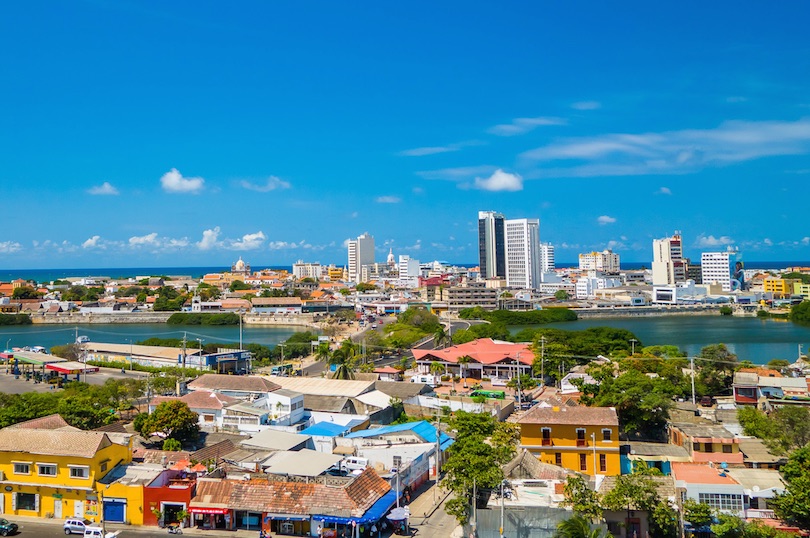
Cartagena is a major city on Colombia’s Caribbean coast. It was founded by the Spanish in 1533, who named it after Cartagena, Spain. During Spain’s domination in South America, the city was the center of politics and the economy.
Cartagena is a quite modern city today, but you’ll find walled historic center and the fortress, deemed the largest fortifications in South America, that defended it. Cartagena has a rich cultural scene, with festivals throughout the year; museums and art galleries.
See also: Where to Stay in Cartagena
20. Salvador, Brazil
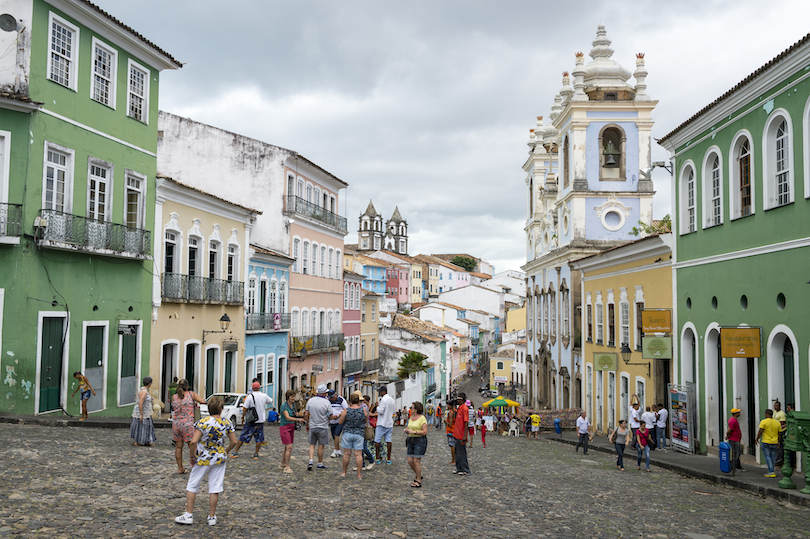
Salvador da Bahia, also known as just Salvador, has several things going for it. The Portuguese founded it in 1548, so it’s one of the oldest colonial cities in the Americas. You’ll see its rich past in Pelourinho, the historic center named for the whipping post where slaves were beaten.
Brazil’s third largest city was also the first slave port in the Americas; traces of this African heritage can be found in the local culture today, especially the cuisine. Salvador also is a party town, hosting the world’s largest party: its annual Carnival celebration.
19. Los Glaciares National Park, Argentina
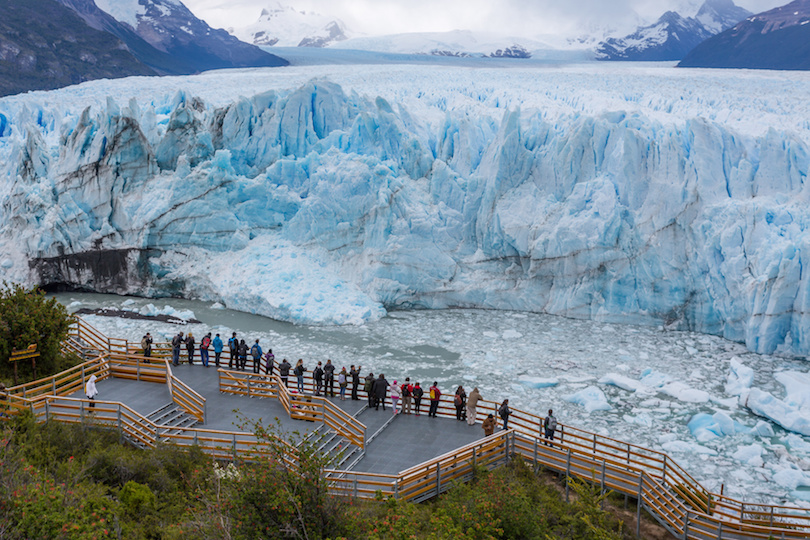
They don’t do things in a small way in Los Glaciares National Park. Not only is the park the largest national park in Argentina, it is home to the largest ice cap outside of Greenland and Antarctica – an ice cap that feeds 47 large glaciers. The most famous of these is the Perito Moreno glacier; unique among glaciers because it is advancing while others are receding.
The park also is home to Lake Argentino, the largest in the country. The park also is known for its ecology and biodiversity with the well-conserved Magellan Subpolar forest and Patagonian Steppe.
18. Pantanal, Brazil

The Pantanal can be difficult to get to – access is mostly by plane or boat – but once you get there…Oh! The Pantanal, located mostly in Brazil (some is in Bolivia and Paraguay), is the world’s largest tropical wetland, encompassing an area the size of Washington State.
While not as famous as its sister wetlands in the Amazon, the Pantanal is the best place in South America to see wildlife, ranging from jaguars to capybaras.
17. Ushuaia, Argentina
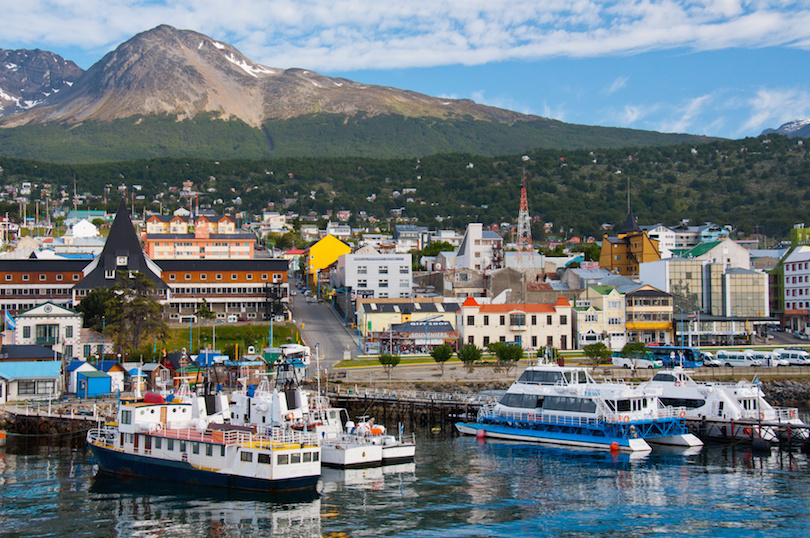
If you like to visit remote places, then put Ushuaia on your bucket list. The capital of Argentina’s Tierra del Fuego, Ushuaia is considered the southernmost city in the world. Indeed, the train to the End of the World ends here.
Nestled among the mountains along a bay, Ushuaia is very picturesque when it’s not cloudy or windy, which is much of the time. The former penal colony has a museum and it’s a good place to see penguins, orca whales and seals.
16. Tayrona National Park, Colombia
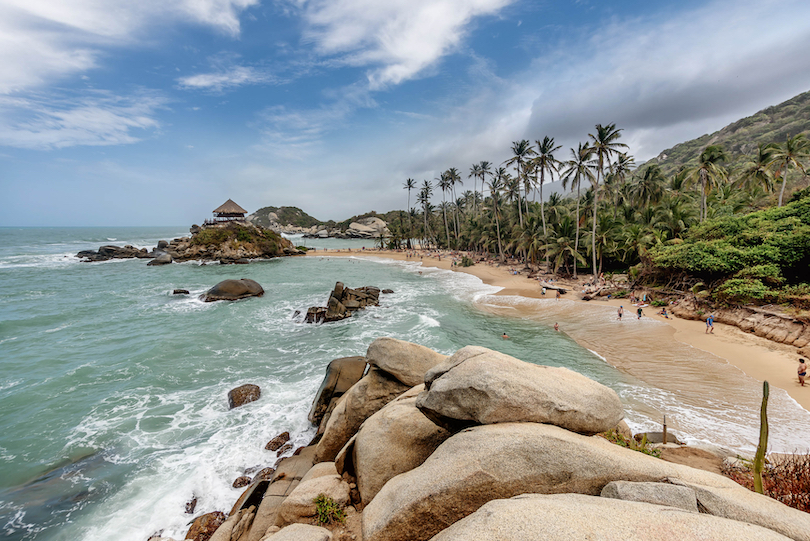
When protecting the environment and its inhabitants while enjoying stunning views is on your top list, you’re sure to enjoy Tayrona National Park on the Caribbean coast of Colombia.
The country’s second most visited national park, Tayrona is a protected marine reserve that takes in both land and sea. You’ll find great biodiversity in the flora and fauna here. Wildlife includes 300 species of birds, more than 100 different mammals and 70 kinds of bats.
Tayrona is probably best known for its spectacular beaches, which are set in deep bays, backed by mountains and shaded by coconut palms. Because of strong current however most beaches are not suitable for swimming.
15. Quito, Ecuador
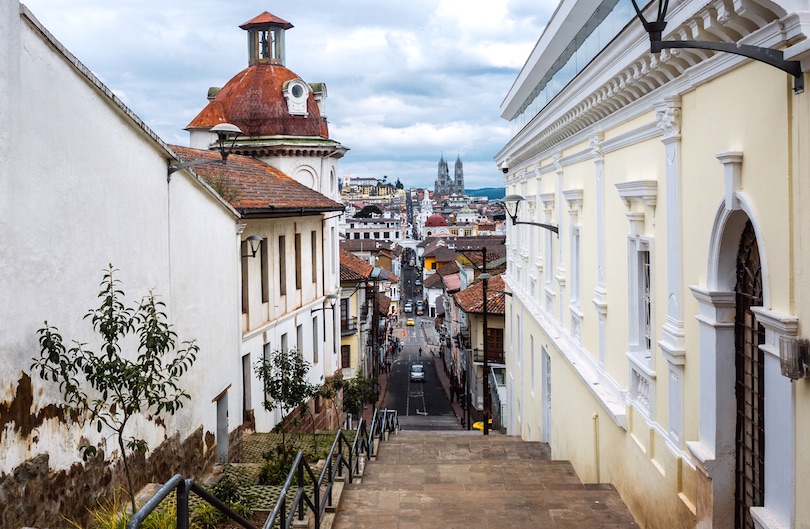
Ecuador’s capital, Quito, is unique among world capitals. It is the highest capital in the world (La Paz is higher but isn’t Bolivia’s legal capital) and also closest to the equator. Founded by the Spanish in 1534, Quito’s colorful old town is one of the best-preserved, least changed and largest in all the Americas.
Located in Ecuador’s northern highlands, the city is surrounded by volcanoes that can be seen on a clear day. Quito is the only world capital that is threatened by active volcanoes.
14. Colca Canyon, Peru
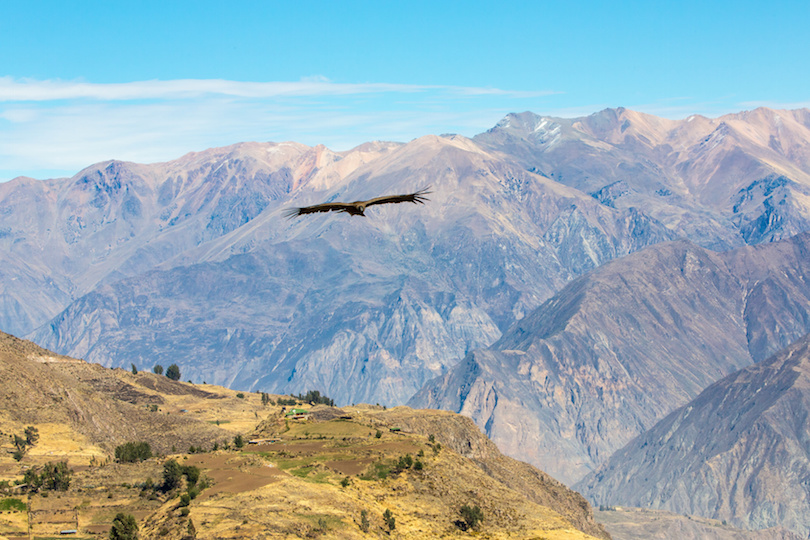
There’s a reason Colca Canyon is the third most visited tourist destination in Peru: stunning views. The canyon is one of the deepest in the world, but not the deepest in Peru, though it is more than twice as deep as the U.S. Grand Canyon.
If you get tired of scenic views, you can feast your eyes on the sky where you may see Andean condors and the biggest hummingbirds you’ve ever seen. Villages are a good place to buy local handcrafts.
13. Atacama Desert, Chile
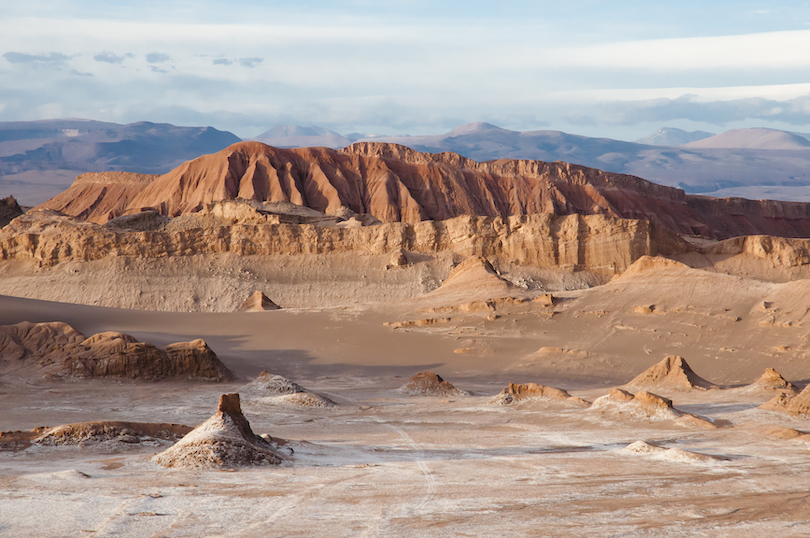
The Atacama Desert is unique: It’s the driest non-polar desert in the world, maybe only raining once every four years. It stretches about 1,600 km (1,000 miles) along the coast of Chile, situated between the Andes and the Pacific Ocean.
The soil is comparable to that found on Mars; portions stood in for Mars in the movie, Space Odyssey: Voyage to the Planets. Vast salt flats, active geysers and intense blue lagoons are just a few of the extraordinary features of this region.
12. Angel Falls, Venezuela
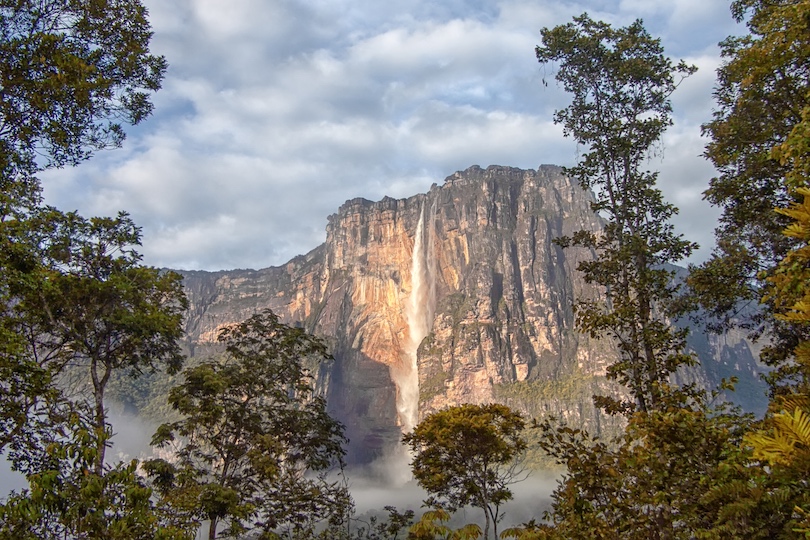
Angel Falls is most definitely a scene stealer in Venezuela’s Guayana Highlands. It is the highest uninterrupted waterfall in the world – 15 times higher than Niagara Falls, which is shared by Canada and the United States. Water cascades more than 950 meters (3,200 feet) down Auyantepu Mountain into the Rio Kerepacupai Meru.
The waterfall is named for American Jimmy Angel who, in 1937, became the first pilot to fly over the falls. Getting there is an adventure involving plane and river boat rides.
11. Cusco, Peru
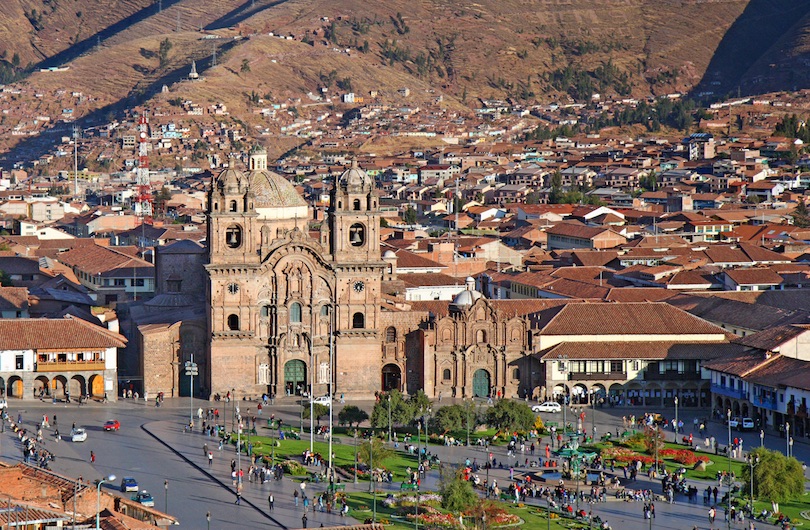
Cusco has a colorful historic past Located at 3,400 meters (11,000 feet) in elevation in the Andes Mountains, Cusco was once the capital of the mighty Inca Empire. Then, in the 16th century, it was conquered by the Spanish, who pretty much decimated the Incas.
Though not the national capital, Peru’s constitution names it the historical capital of the country. Remains of many Inca sites can be found in the surrounding area while the Spanish colonial heritage can be found in the Old Town.
10. Salar de Uyuni, Bolivia
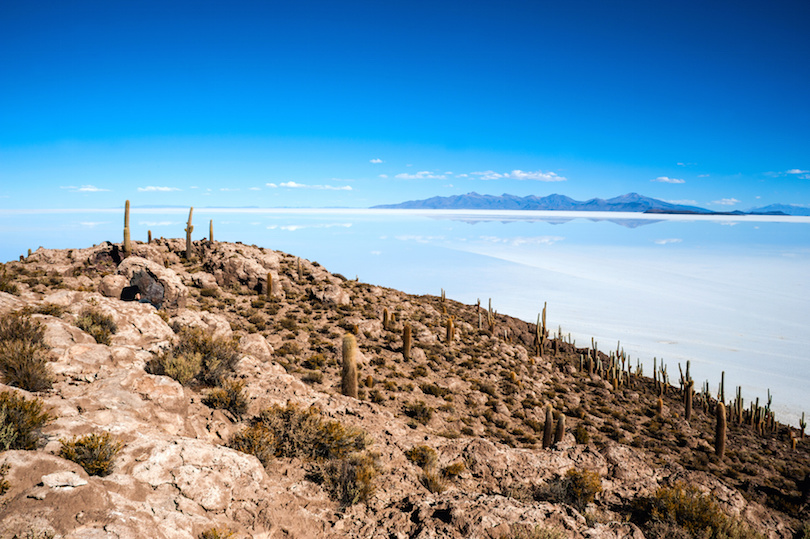
Situated in the Andes nearly 3,700 meters (12,000 feet) above sea level, Salar de Uyuni is the world’s largest salt flat. Located in southwest Peru, the salt flat is covered by a thick crust, which provides salt and covers a brine.
The salt flat is as flat as you can get and with the harsh terrain looks otherwordly, especially after rain when the Salar turns into a giant mirror. One of the most unusual places to visit in South America, it’s also a major breeding ground for flamingos.
9. Lake Titicaca, Peru & Bolivia
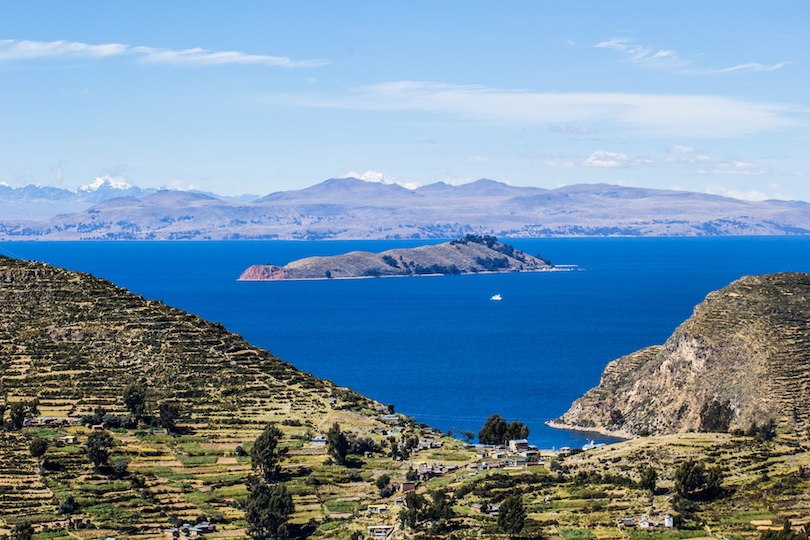
Lake Titicaca, South America’s largest lake, straddles the border of Bolivia and Peru. At an elevation of just over 3,800 meters (12,500 feet), it is considered the highest navigable lake in the world, though there are smaller lakes higher than this one.
Many of its 41 islands are inhabited, including the floating islands the natives make with heavy reeds. About 500 species of aquatic life live in the lake, which has a large population of water birds. Local belief says the sun was born at Lake Titicaca.
8. Easter Island, Chile
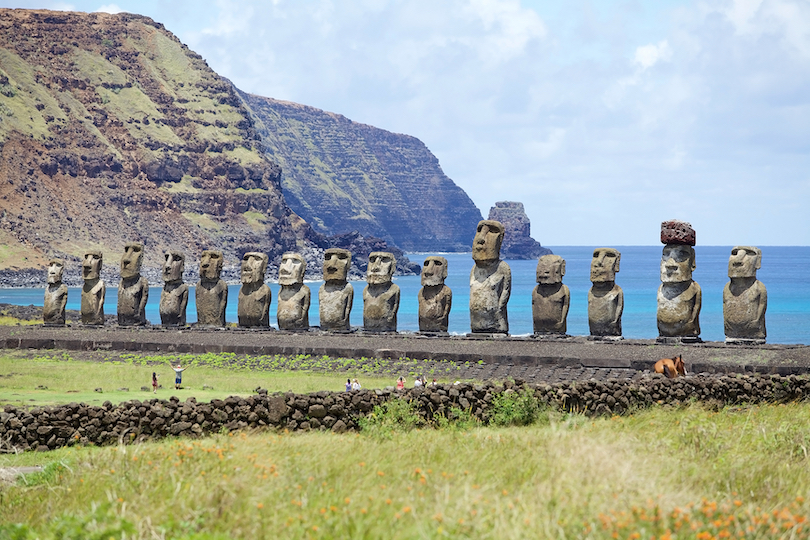
Getting to Easter Island can be time-consuming, since it is the most remote inhabited island in the world. The nearest inhabitants are almost 1,300 miles away. But it’s not its remoteness this Chilean territory is noted for. It’s what you’ll see when you get there: almost 900 primitive statues carved by early Polynesian inhabitants.
These awesome statues, called moai, may have been carved about 1,000 years ago. Most statues were carved from solidified volcanic ash, with obsidian being used for the black eyes.
7. Amazon Rainforest
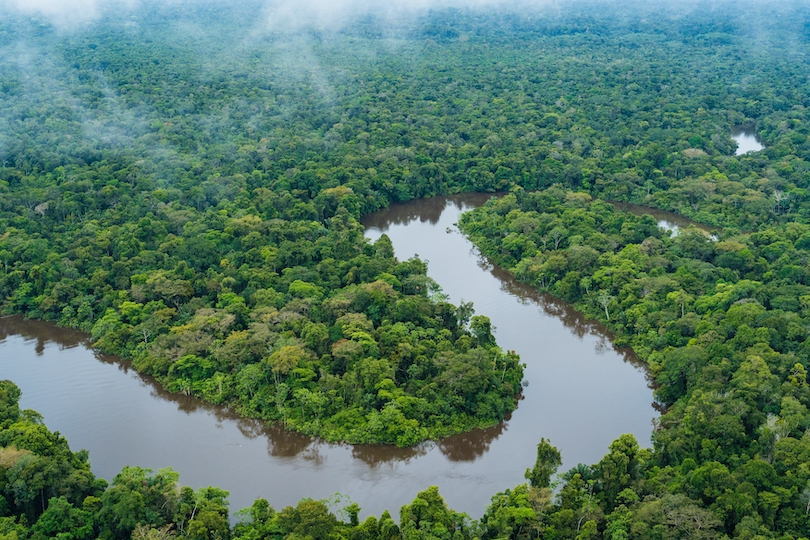
If you lived long enough to count that high, you could count 390 billion trees in the Amazon rainforest. This statistic is mind-boggling, to be sure, but then the Amazon rainforest is one awesome piece of real estate, covering about ¾ of the Amazon River basin.
It is the world’s largest tropical rainforest. Sixty percent of the rainforest is located in Brazil with sizeable chunks in Peru and Columbia; bordering countries have small shares. For sure, the rainforest is loaded with unique flora and fauna.
6. Torres del Paine National Park, Chile
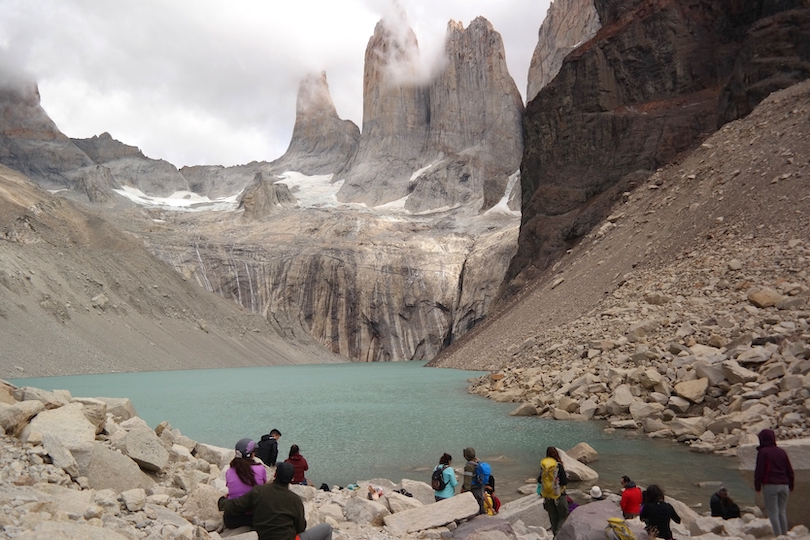
It may be located in remote Chilean Patagonia, but Torres del Paine National Park is one of Chile’s largest and most visited parks. Why? Well, the scenery is pretty spectacular.
The Torres del Paine (Paine means blue in the local indigenous language) is just one awesome sight you’ll see. The three peaks dominate the landscape in the Paine Mountains. Besides mountains, the park is dotted with glaciers, rivers, forests and steppe, making it a hit with outdoors enthusiasts. The park also is home to an endangered species of deer.
5. Buenos Aires, Argentina
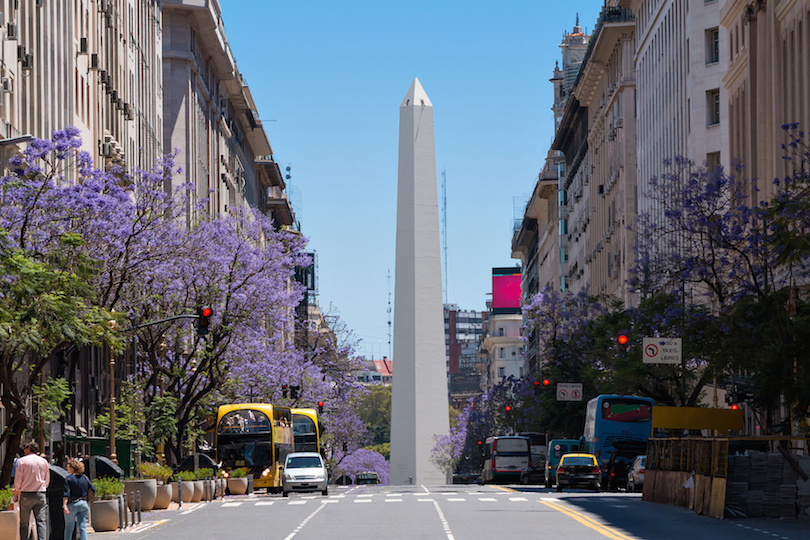
With 17 million people, Buenos Aires has the fourth largest population in the Americas. Located on the Rio de la Plata on the Argentinian coast, the city is noted for its cosmopolitan flair.
Because of its architecture and rich cultural life, Buenos Aires is the most visited city in South America. A must-see here is the Recoleta, a residential neighborhood known for its history. The Recoleta Cemetery is the district’s most famous attraction; it’s where Eva Peron is buried.
See also: Where to Stay in Buenos Aires
4. Galapagos Islands, Ecuador
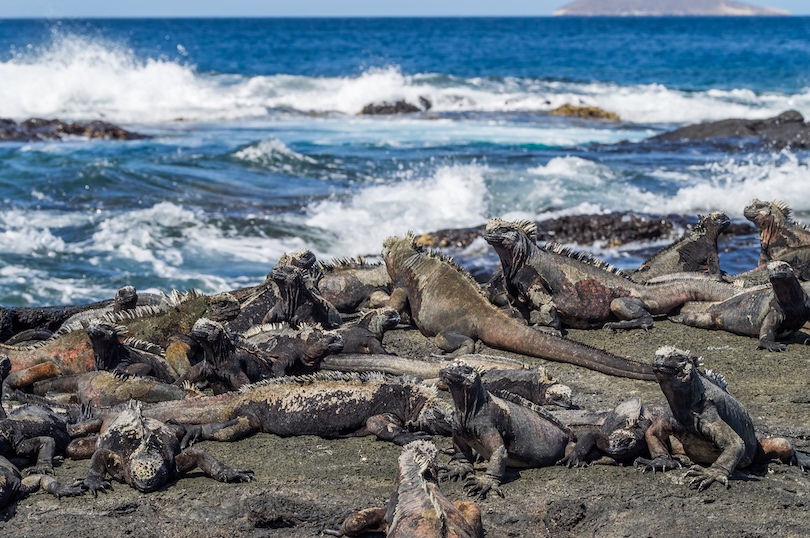
If you want to get a glimpse of what prehistoric animals may have looked like, head to the Galapagos Islands. The animals are like no other place on earth, and include giant tortoises and scary-looking iguanas.
They were the impetus for Charles Darwin’s controversial 19th century book, On the Origin of Species. This archipelago of 18 major islands, about 900 km (550 miles) off the coast of Ecuador, was formed – and are still being formed – by volcanic action.
3. Iguazu Falls, Brazil & Argentina
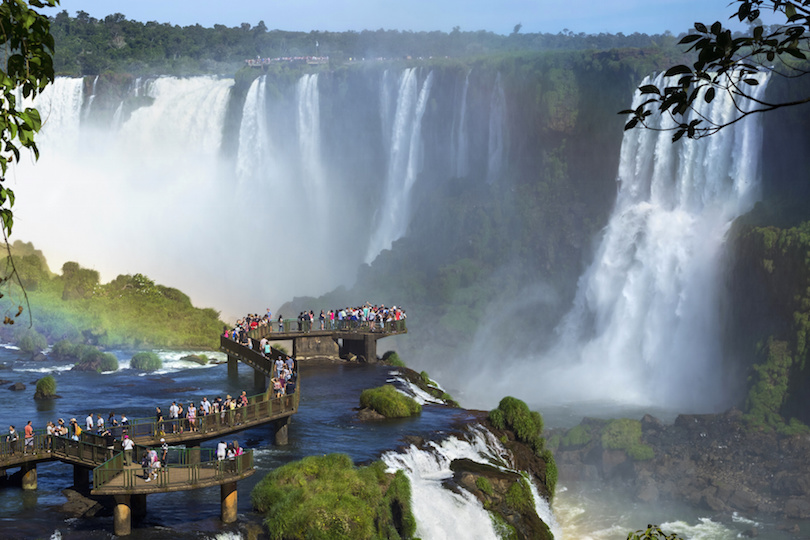
One of the best places to visit in South America, Iguazu Falls have to be seen to be appreciated as mere words cannot do them justice. They truly live up to their name, which translates as “big water:” They’re the world’s largest waterfalls system, with 275 waterfalls of various sizes – Devil’s Throat is the biggest.
For much of its journey to the ocean, the Iguazu River flows through Brazil, but, seemingly in a spirit of international cooperation, most of the falls are in Argentina.
2. Rio de Janeiro, Brazil
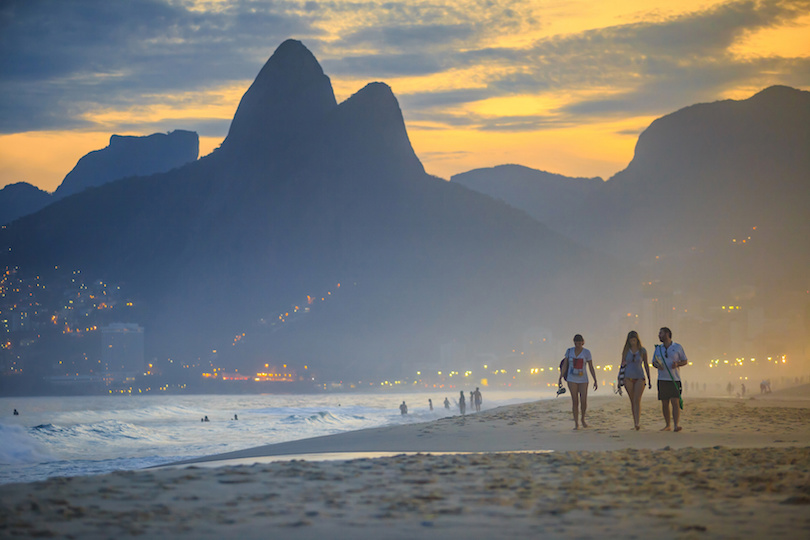
When you visit Rio de Janeiro you simply must take a samba lesson; even The Girl from Ipanema does the samba, Rio’s most popular dance. Besides the samba, this cosmopolitan city is known for its Carnival, the bossa nova, and Copacabana Beach.
Its most famous landmark may be the Christ the Redeemer statue that sits atop Corcovado Mountain. Rio hosted the 2016 Summer Olympics, though its residents overwhelmingly prefer soccer: Maracana Stadium is one of the largest soccer stadiums in the world.
See also: Where to Stay in Rio de Janeiro
1. Machu Picchu, Peru
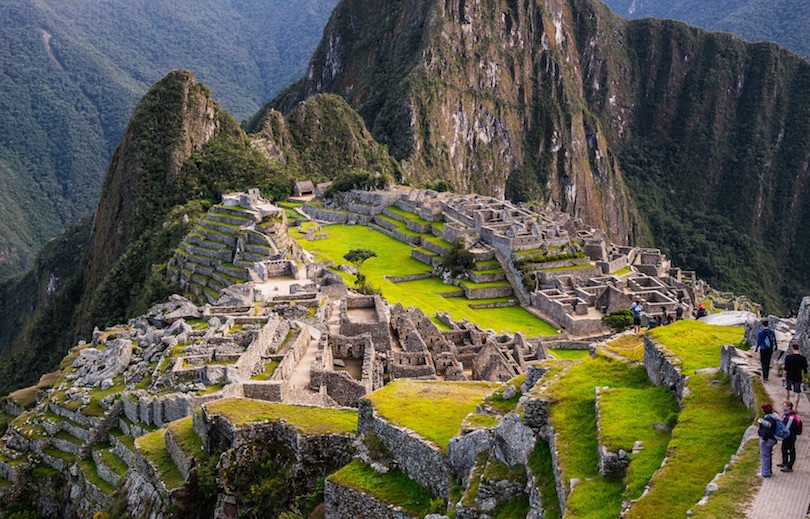
Machu Picchu is a magnificent representation of the Inca civilization before the Spanish came. Nestled in the Peruvian Andes, Machu Picchu served as a palace for the emperor, a fortress and as a site for religious ceremonies where human sacrifices were made to appease the gods.
Untouched by the Spanish, the site was abandoned after the conquest, only to be “discovered” by an American professor in the early 1900s. Built from polished stones, Machu Picchu is a fascinating example of classical Inca architecture. With its spectacular views, Machu Picchu is Peru’s most visited tourist attraction.
Map of South America
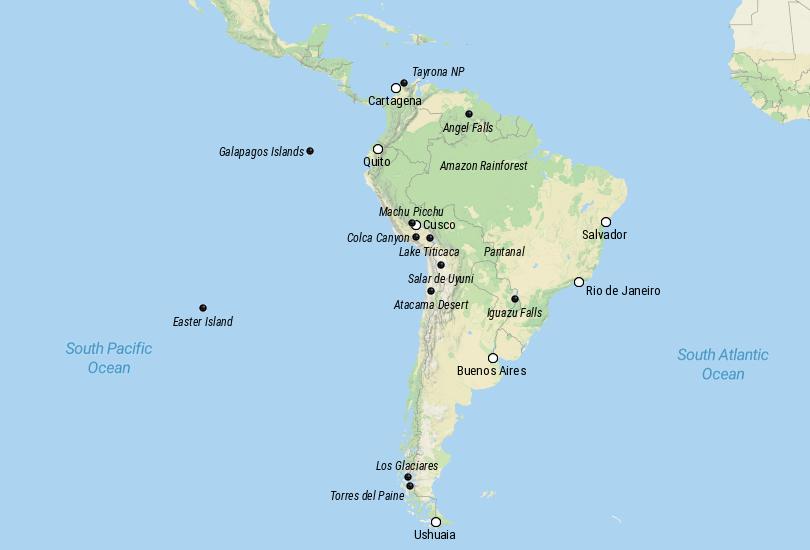
Share this post:

10 Best Places to Visit in Uruguay
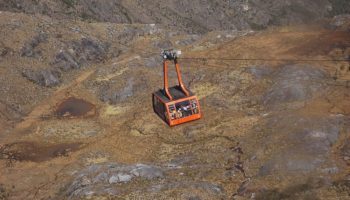
10 Top Tourist Attractions in Venezuela

10 Best Seychelles Luxury Resorts
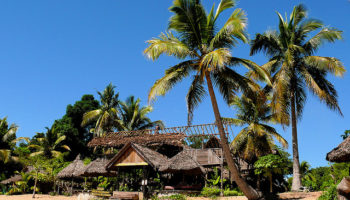
10 Most Beautiful Islands in Africa

Visit Meroë: The Mysterious Pyramids of Sudan

8 Most Beautiful Society Islands

15 Best Things to Do in Mongolia

10 Best All Inclusive Resorts in Fiji

A Guide to Climbing Santa Ana Volcano in El Salvador

29 Best Places to Visit in Southeast Asia
Reader interactions.
May 2, 2020 at 1:00 pm
kaiteur falls Guyana? i dont see how that was left out…
Leave a Reply Cancel reply
Your email address will not be published. Required fields are marked *
This site uses Akismet to reduce spam. Learn how your comment data is processed .

The Best Place to Visit in South America That is Beautiful and Safe
W e recently compiled a list of the 40 Best Places to Visit in South America That Are Beautiful and Safe and in this article, we will discuss the best place to visit in South America that is beautiful and safe.
Overview of International Tourism Across the Globe
According to a report by the United Nations World Travel Organization, 2023 ended with an estimated number of 1.3 billion international arrivals, which is around 88% of pre-pandemic levels. International travel is anticipated to make a complete recovery by the end of 2024, primarily due to increased air connectivity and an increase in the recovery of Asian markets. International tourism receipts touched $1.4 trillion in 2023, which is about 93% of pre-pandemic statistics of $1.5 trillion in 2019. Similarly, total tourism export revenues came up to around $1.6 trillion in 2023, standing at 95% of pre-pandemic levels of $1.7 trillion in 2019. The economic contribution of tourism all across the globe is on the rise. Considered in tourism direct gross domestic product (TDGDP), the contribution stood at approximately $3.3 trillion in 2023, which makes up 3% of the global GDP. A strong recovery of international and domestic tourism is the primary reason behind these statistics.
However, the recovery is not spread evenly across the globe. The highest recovery is in Africa, which has retained more than 96% of its pre-pandemic visitors. The Americas, on the other hand, have managed to reach 90%. In fact, four subregions across the world exceeded their pre-pandemic international arrival levels, including Central America, Southern Mediterranean Europe, the Caribbean, and North Africa. By 2024, international tourism is anticipated to completely recover to pre-pandemic levels, even going for a 2% increase in 2019 levels.
Tourism Sector in South America
Tourism in South America is showing signs of positive growth, primarily due to increasing access to the internet across the region and growing accessibility to travel platforms. According to a report by Mordor Intelligence, the market size of the Latin American travel and tourism market stands at $52.18 billion as of 2024, and is expected to increase to $67.91 billion by 2029. This translates to a growth of CAGR of 5.41% between 2024 and 2029. A report by the United Nations World Travel Organization corroborates the steady recovery of the Americas, with the region reaching 86% of its rate of international arrivals in 2019 by the end of Q1 of 2024. In addition, foreign direct investment (FDI) waned in the region due to the pandemic, but is also showing promising signs of recovery. An increase of 185% was observed in registered investment projects between 2021 and 2022, accounting for a total of $192.6 billion.
In addition, FDI increased to $134 billion in 2021 with a 56% year-on-year increase. The United Nations World Travel Organization and the Development Bank of Latin America (CAF) also joined hands in January 2023 to promote tourism-related investment in Latin America and the Caribbean. The partnership covers tourism investment guide development for five countries in the region, including Ecuador, Barbados, El Salvador, Uruguay, and Panama. New international players, including Norwegian Airlines (FRA:NWC), have cropped up in the region. According to estimates by the United Nations World Travel Organization, Latin America is set to receive around 78.2 million tourists by 2027. This will lead to the generation of $82 billion for the region’s local economy. You can also look at 15 Most Populated Cities in South America .
Key Players in the South American Travel Sector
Despegar.com, Corp. (NYSE: DESP ) and Booking Holdings Inc. (NASDAQ: BKNG ) are some of the most prominent travel services companies operating in South America. On June 4, Despegar.com, Corp. (NYSE:DESP) announced plans to form an exciting partnership with globally renowned artist Shakira as a part of its campaign Dream, Choose, Travel. The collaboration between the most prominent Latin American travel company and Shakira aims at promoting the “travel spirit of Latin Americans,” and connecting people through unforgettable experiences. Here is what Marcelo Grether, Chief Commercial Officer of Grupo Despegar had to say about the collaboration:
“We are proud to welcome Shakira to Despegar. Her Latin American roots, her enormous artistic influence, and her admirable innovative and global vision make her the perfect ambassador for our brand. Together, we look forward to inspiring more people to travel and live unforgettable experiences.”
Booking Holdings Inc. (NASDAQ:BKNG) and Expedia Group, Inc. (NASDAQ: EXPE ) are set to use AI tools to enhance their travel planning services. The Penny AI assistant introduced by Booking Holdings Inc. (NASDAQ:BKNG) on Priceline helps users streamline their booking process. Similarly, Expedia Group, Inc. (NASDAQ:EXPE)’s Romie Assistant not only offers recommendations within group chats but also generates seamless travel schedules for users. Both companies have incorporated conversational AI into their platforms to make travel booking more accessible.
Now that we have taken an overview of the South American travel sector, let’s look at the best place to visit in South America that is beautiful and safe. You can also look at 16 Safe and Affordable Cities in South America for Expats and 12 Most Populated Countries in South America .
Our Methodology
In order to compile a list of the 40 best places to visit in South America that are beautiful and safe, we conducted a consensus approach and a visitor survey through Reddit. Firstly, we consulted ten online travel expert resources to compile a list of the most beautiful and safest cities to visit in South America. Next, we looked at eight Reddit threads that asked commenters to mention the most beautiful and safest cities in South America that they had traveled to. We only chose threads that had more than 50 comments and studied more than 350 comments to shortlist cities that had the most recommendations by Reddit users. We then counted the number of upvotes on each comment and chose the top 40 cities with the most number of upvotes. The 40 best places to visit in South America that are beautiful and safe are arranged in ascending order of their number of upvotes on Reddit.
Note: This list is not exhaustive and does not reflect our opinion. The ranking is solely based on the opinions of mass consumers on Reddit.
At Insider Monkey we are obsessed with the stocks that hedge funds pile into. The reason is simple: our research has shown that we can outperform the market by imitating the top stock picks of the best hedge funds. Our quarterly newsletter’s strategy selects 14 small-cap and large-cap stocks every quarter and has returned 275% since May 2014, beating its benchmark by 150 percentage points ( see more details here ) .
1. Lima, Perú
Number of Reddit Upvotes: 155
Lima ranks first on our list of the 40 best places to visit in South America that are beautiful and safe with 155 Reddit upvotes. Lima is the capital of Peru and is located on the country’s Pacific coast. Known as one of the largest cities in South America, Lima offers a unique mix of its colonial heritage and modern metropolitan status. Some of the most prominent tourist destinations in the city include Lima Main Square, the Lima Cathedral, the Bridge of Sighs, the Basilica and Convent of San Francisco of Lima, the Huaca Pucllana Site Museum, the Presidential Palace, the Lima Plaza Mayor, and several others. The city is primarily considered safe by Reddit users who visited it.
Lima is considered the most beautiful and safest place to visit in South America according to our list. To look at other places that are also considered safe and beautiful in the region, you can look at our detailed report on 40 Best Places to Visit in South America That Are Beautiful and Safe .
At Insider Monkey, we delve into a variety of topics, ranging from the best places to travel in the world to business aspects; however, our expertise lies in identifying the top-performing stocks. Currently, Artificial Intelligence (AI) technology stands out as one of the most promising fields. If you are looking for an AI stock that is more promising than NVDA but that trades at less than 5 times its earnings, check out our report about the cheapest AI stock .
Read Next: 10 Best Dividend Stocks Yielding at Least 7% According to Hedge Funds
Disclosure: None. This article is originally published on Insider Monkey .

Find your perfect tour
- FAQ/COVID-19
- Testimonials
- Travel agent login
- X Search Tours
Welcome to SATO
Leading south america tour provider from australia and new zealand, essence of south america, discover the essence of south america, escape to the wonders of south america, dare to dream of all the places you will go, #dream now travel later, best selling south america tours.
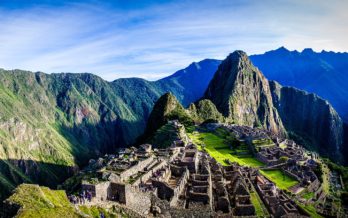
Must See South America
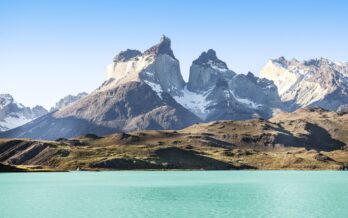
Wonders of Patagonia (Argentina & Chile)
Explore our south america travel guides.

Article , Image Gallery
Luxury hotels in the middle of nowhere.
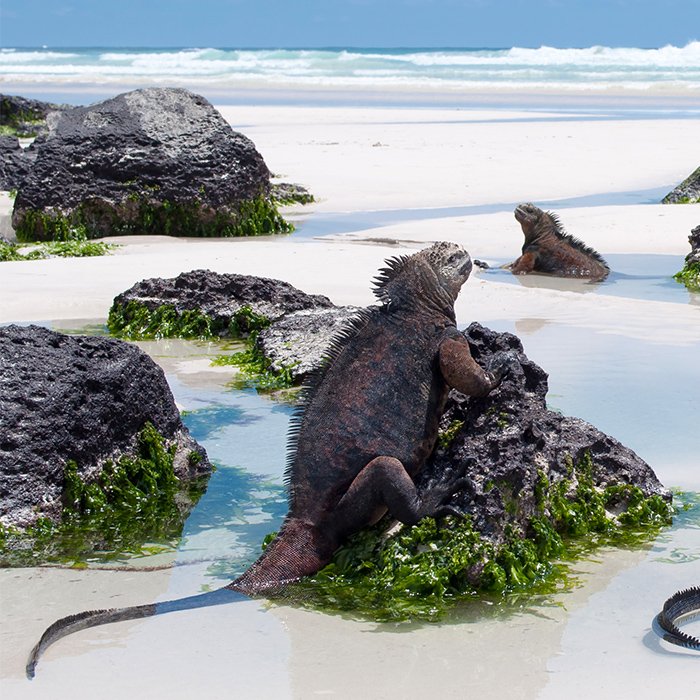
The Unspoilt Natural Wonder of the Galapagos
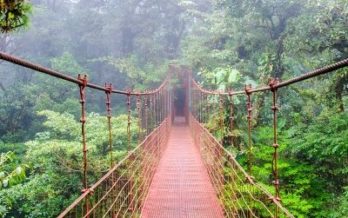
Vistas, Valleys and Volcanos: Incredible Nature Experiences in Central America
Our new interactive map will take you straight to the locations you have been dreaming about. Simply, zoom in or out, click and it will lead you to the country and discover the tours you can take to explore these amazing destinations.
See beyond salsa, sombreros and tequila, Latin America is a feast for the senses with something for every kind of traveler, whether it’s relaxing by the beautiful beaches of Brazil, trekking through the Amazon, admiring the Wondrous glaciers of the Antarctic region or dancing to the rhythms of the samba, salsa or tango. Our staff from South America have travelled extensively through both South and Central America and can offer a unique perspective on the diversity of attractions and destinations to be discovered. So when booking your next trip to South, Central America or Antarctica , ‘talk to us, the locals!’
Browse Our South America Tours

Best of Brazil
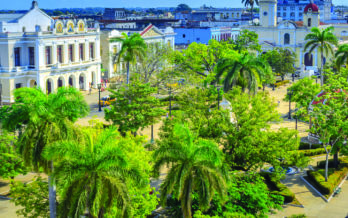
Highlights of Mexico & Cuba
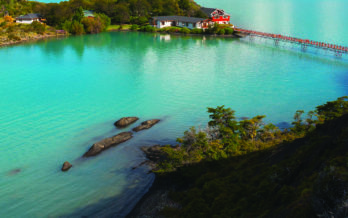
Best of Patagonia (Argentina & Chile)
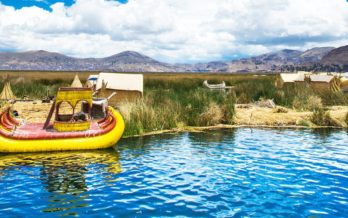
Manco Tupac (Lima To La Paz)

Galapagos & Machu Picchu
- Galapagos Islands
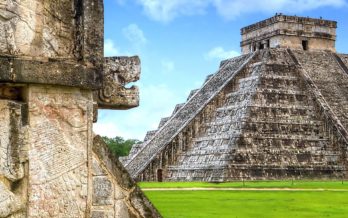
Magic Mexico
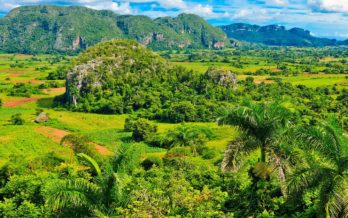
La Bella Cuba
Browse all our cruises - galapagos, antarctica and amazonas.
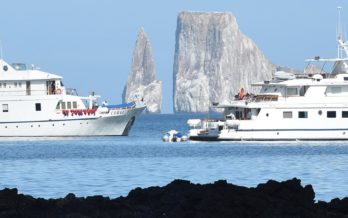
M/Y Coral I and Coral II
- 4 & 5 Days Itinerary

M/C Alya Catamaran
- 4, 5 & 8 Days Itinerary
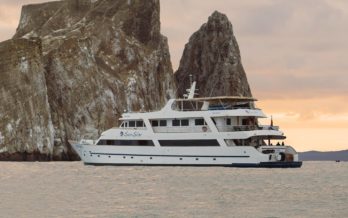
M/Y Galapagos Sea Star Journey
- 5 & 6 Days Itinerary

M/V Aria Amazon Cruise

Manatee Explorer Amazon Cruise
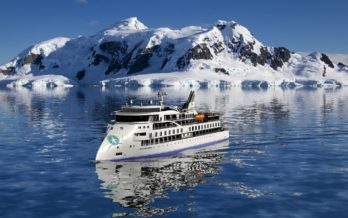
Greg Mortimer

M/V Ushuaia

Ocean Diamond

G Expedition

M/V Magellan Explorer
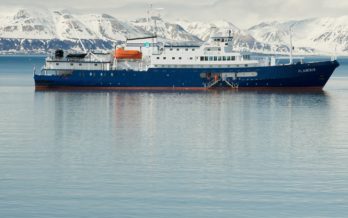
World Explorer
South america travel highlights.
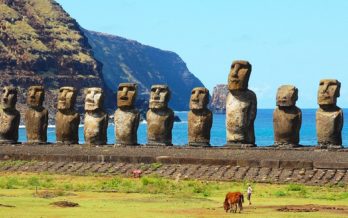
Treasures of South America
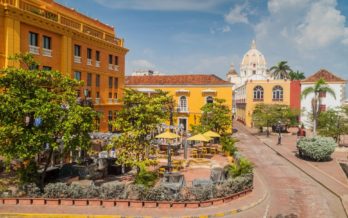
Highlights of Colombia
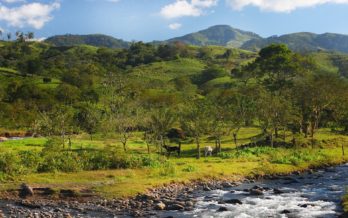
Costa Rica Highlights

Incas, Samba & Falls

Highlights of Argentinean Patagonia

Highlights of Bolivia
Tailor made tours, curated by the experts., tailor made by locals, premium experience, value for money.
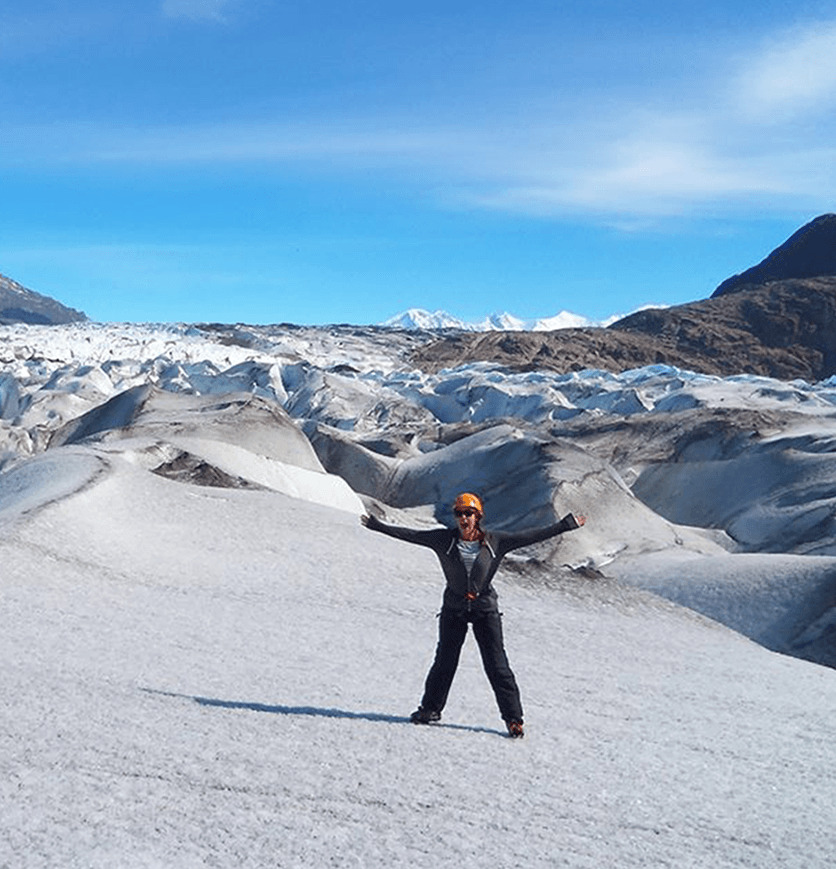
Get in touch today, we’d love to talk to you.
Call us: 1300 857 805.
We have friendly travel specialists who are waiting to help you.
Send an Enquiry
Have questions about Latin America? Simply fill out the form.
Request a Brochure
Get copies of our latest brochures and start planning your next South America holiday.

Leave your feedback
- Copy URL https://www.pbs.org/newshour/nation/live-map-track-the-path-of-tropical-storm-ernesto
Live map: Track the path of Hurricane Ernesto
SAN JUAN, Puerto Rico (AP) — Hurricane Ernesto barreled toward Bermuda on Thursday after leaving hundreds of thousands of people in Puerto Rico without power or water as sweltering heat enveloped the U.S. territory, raising concerns about people’s health.
Track the storm with the live map below.
A hurricane warning was in effect for Bermuda, with Ernesto expected to pass near or over the island on Saturday.
The Category 1 storm was located about 495 miles (795 kilometers) south-southwest of Bermuda on Thursday afternoon. It had maximum sustained winds of 85 mph (140 kph) and was moving north at 13 mph (20 kph) over open waters.
“I cannot stress enough how important it is for every resident to use this time to prepare. We have seen in the past the devastating effects of complacency,” said National Security Minister Michael Weeks.
Ernesto was forecast to near Category 3 hurricane status on Friday and then decrease in strength as it approaches Bermuda, where it is expected to drop between 6-12 inches of rain, with up to 15 inches in isolated areas.
“All of the guidance show this system as a large hurricane near Bermuda,” said the National Hurricane Center in Miami.
Ernesto is then expected to pass near or east of Atlantic Canada on Monday.
Meanwhile, the spinning storm on Thursday was generating southern winds in Puerto Rico, which have a heating effect as opposed to the typical cooling trade winds that blow from the east.
READ MORE: Hurricane forecasters still predict highly active Atlantic season in updated outlook
“We know a lot of people don’t have power,” said Ernesto Morales with the National Weather Service as he warned of extreme heat and urged people to stay hydrated.
More than 380,000 of 1.4 million customers remained in the dark more than a day after Ernesto swiped past Puerto Rico late Tuesday as a tropical storm before strengthening into a hurricane. A maximum of 735,000 clients were without power on Wednesday.
Hundreds of thousands also were without water as many questioned the widespread power outage given that Ernesto was only a tropical storm when it spun past the island.
“I haven’t slept at all,” said Ramón Mercedes Paredes, a 41-year-old construction worker who planned to sleep outdoors on Thursday night to beat the heat. “I haven’t even been able to take a shower.”
At a small park in the Santurce neighborhood of the San Juan capital, Alexander Reyna, a 32-year-old construction worker, sipped on a bright red sports drink that friends provided as roosters crowed nearby above the slap of dominoes.
He had no water or power and planned to spend all day at the park as he lamented the lack of breeze, a slight film of sweat already forming on his forehead: “I have to come here because I cannot stand to be at home.”
The situation worried many who lived through Hurricane Maria, a powerful Category 4 storm that hit Puerto Rico in September 2017 and was blamed for at least 2,975 deaths in its sweltering aftermath. It also razed the island’s power grid, which is still being rebuilt.
The National Weather Service issued a heat advisory on Thursday warning of “dangerously hot and humid conditions.”
Faustino Peguero, 50, said he was concerned about his wife, who has fibromyalgia, heart failure and other health conditions and needs electricity. He has a small generator at home, but he is running out of gasoline and cannot afford to buy more because he hasn’t found work.
“It’s chaos,” he said.
Officials said they don’t know when power will be fully restored as concerns grow about the health of many in Puerto Rico who cannot afford generators or solar panels on the island of 3.2 million people with a more than 40% poverty rate.
Crews have flown more than 540 miles (870 kilometers) across Puerto Rico and identified 400 power line failures, with 150 of them already fixed, said Juan Saca, president of Luma Energy, a private company that operates the transmission and distribution of power in Puerto Rico. The remaining failures will take more time to fix because they involve fallen trees, he added.
“We haven’t seen anything catastrophic,” he said.
When pressed for an estimate of when power would be restored, Alejandro González, Luma’s operations director, declined to say.
“It would be irresponsible to provide an exact date,” he said.
At least 250,000 customers across Puerto Rico also were without water given the power outages, down from a maximum of 350,000. Among them was 65-year-old Gisela Pérez, who was starting to sweat as she cooked sweet plantains, pork, chicken and spaghetti at a street-side diner. After her shift, she planned to buy gallons of water, since she was especially concerned about her two small dogs: Mini and Lazy.
“They cannot go without it,” she said. “They come first.”
— Danica Coto, Associated Press
Support Provided By: Learn more
Educate your inbox
Subscribe to Here’s the Deal, our politics newsletter for analysis you won’t find anywhere else.
Thank you. Please check your inbox to confirm.

- Corporate & media website
- Travel Website
- Travel trade website
- Business events website
- About South African Tourism
- Media centre
- Annual Report
- Asset Library
Choose your country and language:
- Congo Democratic Republic
- South Africa
Asia Pacific
- South Korea
- Netherlands
- United Kingdom
By creating an account, I agree to the Terms of service and Privacy policy
Economic impact of the Tourism Sector: Tourism is a key economic driver and it is on the rise
T T he tourism sector is often overlooked as a key economic sector yet it is a significant contributor and driver of economic growth and job creation.
As we commence the 7 th administration, our mission is to elevate the profile of tourism by supporting efforts to grow the sector and demonstrating this growth and the sector’s impact on the economy and communities.
As articulated by President Cyril Ramaphosa in the Opening of Parliament address, Cabinet has defined the three priority areas for government for the next 5 years.
Cabinet will develop a Medium-Term Development Plan, which will translate these priorities into a detailed plan and interventions that government will implement over the next five years.
The Government of National Unity has resolved to dedicate the next five years to actions that will advance three strategic priorities:
- Firstly, to drive inclusive growth and job
- Secondly, to reduce poverty and tackle the high cost of
- Thirdly, to build a capable, ethical and developmental
We have placed inclusive economic growth at the center of the work of the Government of National Unity and at the top of the national agenda.
Those are the three priorities for government and all departments, entities and sectors must make a contribution to achieving these priorities within the next 5 years.
The Department of Tourism is currently working on finalising our 5 year plan which will align to the GNU priorities, the National Development Plan, the Tourism Sector Master Plan and the National Tourism Sector Strategy.
As the NDP states: Tourism is one of the fastest growing economic sectors and there is an opportunity to increase employment in this sector.
As part of our plan, our target will be to increase arrivals to 15million by 2030 as stated in the NDP.
We have just finalised a 2-day departmental Lekgotla together with SA Tourism where we have made an assessment of where we are now.
The next part of the plan is to map where we want to go and how we will get to the 15million arrivals by 2030.
We have an opportunity now to design the future of tourism for the next 5 to 10 years and it is not going to be business as usual.
We have to drive urgency in the implementation in our plans for us to success in reaching our targets.
These action plans will be implemented together with the private sector inclusive of the whole tourism value chain.
I want to recognise and thank all the hard working people in the tourism sector – both public and private. We have done very well to rebuild the sector after COVID 19 but now we have to do even more and better. I also want to thank you in advance for the work you are going to do.
To address the first two priorities of the GNU, we will also work to increase the number of jobs created in the tourism sector by driving greater implementation of programmes which support the private sector to create more jobs.
We will also be working with Operation Vulindlela in the Presidency and Departments of Home Affairs, Transport and Sport, Arts and Culture to:
- Facilitate improvements in the visa regime
- Grow the number of direct flights to and from South Africa
- Implement a more seamless tour operator licence process and
- Invest in infrastructure and tourism sites that reflect and showcase our diverse culture and heritage for visitors to enjoy
In terms of the 3 rd priority to build a capable, ethical and developmental state, our five year plan and targets will implement programmes for demand-led skills and a greater use of technology such as AI to enhance our tourism offering.
We have already engaged with the University of Johannesburg – with professors Arthur Mutambara and Chris Landsberg to assist us with this third priority.
Importance of tourism in South Africa
- Tourism is an engine for economic growth and is vital for South Africa for several reasons:
- Economic Growth: Tourism is a major source of revenue, significantly contributing to the national GDP
- Employment: The sector supports thousands of jobs directly and indirectly, providing livelihoods for many South Africans.
- Infrastructure Development: The demand from tourism drives infrastructure development, benefiting other sectors
Tourism is a serious business, employing millions in our country and enabling many to own and operate their own businesses. It is a multi-billion Rand economic sector for our country and it is on the rise.
As one of the world's most diverse and beautiful destinations, South Africa offers a variety of experiences, from wildlife safaris and natural scenic wonders to vibrant cities and cultural heritage.
As a country we have claimed many tourism awards for being a top destination, our cities have claimed awards, our airports have claimed awards and our establishments such as hotels and tourism experiences have clinched many awards.
Today I will outline an in-depth analysis of the tourism sector's importance, global performance comparisons, South Africa's specific performance metrics, economic impact, and a detailed comparison of arrivals performance and tourism spend.
Global tourism performance arrivals
According to the United Nations (UN) Tourism organisation, of which South Africa is a member state, 2023 ended with global tourism arrivals at 11% below 2019 levels.
Europe was 4% below, the Asia Pacific region was 35% below, the Americas were 9% below, and Africa was 4% above 2019 levels.
That already demonstrates how well the African tourism sector fared in 2023 compared to the rest of the world.
All over the world, countries have risen from the ashes of the pandemic and indeed our growth for arrivals to South Africa has seen robust improvement.
Global Tourism income
In 2023, international tourism receipts reached 1.5 trillion US dollars, nearly matching pre-pandemic levels according to statistics released by UN Tourism.
Tourism's direct contribution to GDP also recovered to pre-pandemic levels, reaching an estimated 3.3 trillion US dollars, equivalent to 3% of global GDP.
The UN Tourism Panel of Experts highlighted ongoing economic and geopolitical challenges across the world leading to tourists being more likely to seek value for money and travel closer to home due to economic pressures.
These findings guide us and places the imperative on us to make it easier for people to choose South Africa as a destination through a seamless visa regime, improved air access and putting together innovative and affordable travel packages.
International air access to South Africa
Seat availability has not yet returned to 2019 levels.
In 2022, there were 7.8 million seats available, compared to 9.3 million in 2019. Similarly, the number of flights decreased from 55 000 in 2019 to 52 000 in 2024.
Direct flights are essential for boosting arrivals from various markets, and South Africa needs to establish more direct connections and recover those that were lost.
Over the past year, we have seen the return of many new direct flights from the United States, Brazil, China, Australia and many others.
However there are still many gaps where we need to secure direct flights to help grow arrival numbers. A key gap is a direct flight between South Africa and India.
We are working on plugging these gaps and have developed a National Air Access Strategy to present to Cabinet.
This strategy will be a holistic approach involving all partners to secure more direct flights to South Africa
South Africa's performance
In 2023, we welcomed around 8.5million international arrivals – up by 48.9% from the 5.7million arrivals in 2022 which contributed R95 billion in terms of spend.
The R95billion Total Tourist Foreign Direct Spend was an increase of 92% in 2023, surpassing 2019 levels a new all-time high for the destination.
From January to May this year, we welcomed 3.8million international arrivals, up by 9.7% compared to 2023.
For the first Quarter of 2024: Total spend was R25.7 billion from foreign travel into South Africa.
The regional distribution of tourists into South Africa from January to May 2023 highlights the varied share across different markets:
- Africa Land Market: Dominated with 72% of arrivals (2.78 million)
- Africa Air Market: 1% (117 000)
- Europe: 2% (578 000)
- The Americas: 3% (203 000)
- Asia, Australasia, and the Middle East: 9% (149 000)
According to projections by Oxford Economics, arrivals by the end of 2024 are estimated to reach 10.7 million, surpassing 2019 levels.
International arrivals to South Africa is expected to grow to 15.1 million by 2030, based on Oxford's updated projections for 2024.
Tourism's contribution to GDP in South Africa
According to the World Travel and Tourism Council (WTTC), Tourism's contribution to South Africa's GDP was 9.5% in 2019.
Tourism’s contribution to the GDP naturally dipped during COVID-19 but recovered to 8.2% in 2023. It is estimated to rise to 8.8% by the end of 2024 and reach 10.4% of GDP by 2030.
For comparability, according to WTTC's 2023 estimates, Thailand's contribution to GDP was 13.3%, Australia's was 8.1%, Brazil's was 7.8%, and Kenya's was 6.7%.
Tourism is therefore a vital sector for South Africa, contributing more to GDP than transport, mining, and agriculture, and nearly matching the government's contribution to GDP.
Tourism's employment statistics
According to WTTC statistics, South Africa’s tourism sector employed 1.46million people in 2023 and is expected to grow to nearly 1.7 million jobs in 2024.
The WTTC further projects that employment in the tourism sector for South Africa is projected to grow to and 2.23million jobs in 2030.
Domestic travel
We also recorded 38 million domestic trips which contributed R121 billion in terms of spend for 2023.
The domestic market's spending was higher than international arrivals spend, underscoring the significant economic impact of domestic tourism.
Domestic air access
Domestic air travel has yet to return to 2019 levels in terms of the number of flights. In 2024, there are 143 000 flights compared to 167 000 flights in 2019.
Although seat capacity has been increasing over the past three years, it reached 18 million seats in 2024 but it is still below the 22 million seats in 2019.
Domestic tourism is the bedrock of our sector and we are working closely with partners such as TBCSA, SATOVITO, SATSA and others to drive further improvements for domestic travellers such as making travel more affordable and accessible.
We also have the annual Sho’t Left Campaign encouraging locals to travel and explore their own country where South African establishments offer discounted deals.
Sho’t Left Travel week takes place in September where South Africans can get discounted travel deals between the 2nd and 8th September but they can travel when it suits them later .
Last year more than 900 tourism establishments offered deals and we are pushing to surpass those numbers this year.
I therefore want to encourage tourism businesses to sign up their deals on the Sho’t Left platform so that more South Africans can explore and experience all our diverse and amazing, affordable tourism offerings.
Several factors have contributed to the increase such as South Africa having a strong brand and our country offers a unique and compelling destination with a diverse range of attractions that set it apart from other destinations.
These efforts paid off as we saw arrival and domestic travel numbers increase through what we call revenge travel.
We have done well, but this is not enough and we want to increase the arrival numbers substantially because that translates to more economic growth and job creation from the tourism sector.
Growth in arrival numbers translates to more people becoming economically active, more people being freed from poverty, more people expanding their businesses because more people are travelling to and enjoying our beautiful Mzansi.
Meetings, Incentives, Conferences and Events (MICE) performance
South Africa is also known as a prime business travel destination and hosts hundreds of meetings, conferences and events each year.
South Africa has improved its global ranking as a business event destination, moving up five spots in the 2023 International Congress and Convention Association (ICCA) Global Ranking Report.
We remain the number one meeting and conference destination in Africa and the Middle East, according to the 2023 ICCA ranking report.
In 2023, South Africa hosted 98 international and regional association meetings and conferences that met the criteria set by the International Congress and Conventions Association (ICCA).
These meetings contributed significantly to the South African economy, with a total estimated economic impact of just over R2 billion.
For the 2023/24 financial year, through South African Tourism’s National Convention Bureau, we sourced and submitted 95 bids for international business events to be hosted in South Africa between 2024 and 2032 were submitted.
So far, South Africa has won 19 of the bids submitted, which have a combined economic contribution of R84,1 million between 2024 and 2025 and attract over 3 000 international and regional delegates.
According to Allied Market Research (AMR), South Africa's MICE industry was valued at an estimated R72 billion in 2022 and R122 billion in 2023 – a 69% increase.
To enhance tourism safety, the Department of Tourism invested R174million to deploy more than 2 300 tourism monitors to be deployed to key tourist sites to enhance visitor safety.
The private sector has also made investment to enhance safety measures and this work together with the police and all partners will continue to ensure that all travellers are safe in South Africa.
The majority of travellers have a safe, pleasant and unforgettable experience in South Africa but we must do more to clamp down on crime.
South Africa has visa waivers in place for 132 countries meaning travellers from these countries do not need a visa to come to South Africa for periods of up to 90 days so there we have already made it easy for people to get to South Africa from all these countries.
We have also launched the e-visa application system to 34 countries however there are substantial improvements needed here especially for key source markets such as China and India.
I have requested a meeting with the Minister of Home Affairs shortly to continue working with this department to streamline this process.
This is a key area of work we must improve with Home Affairs to grow our arrival numbers.
Tour operator licences
In another area of work around reducing red tape for the sector, we have been working closely with the Department of Transport to reduce the waiting time for tour operator licences.
We welcome the signing of the National Land Transport Amendment Bill into law, by the President in June 2024. The amended Act will enhance efficiency.
From June 2023 to June 2024, the NPTR held 19 adjudication meetings and adjudicated a total of 952 applications for operating licenses for tourist transport services.
There is still a lot of work to be done to enhance the efficiency and effectiveness of the system, and we look forward to working with the Minister of Transport on this key need.
Private sector partners such as the Southern Africa Tourism Services Association (SATSA) have been instrumental in unblocking these challenges and working with government to resolve this matter.
Together with the Minister of Transport and her department, SATSA and other partners, we will continue to improve and streamline this process so that tour operators can operate effectively.
Marketing
Last year we held several engagements with the private sector and we have agreed on a collaborative effort with all partners to market South Africa as a prime tourist destination with one message and one marketing strategy.
This is to address the fragmentation in marketing South Africa as a destination,
To take our marketing efforts to the next level, we will be rolling out our new global campaign, which we launched at Africa Travel Indaba, to all markets across the world.
We will continue to engage tourism departments and authorities in key source markets and new markets to establish closer relations and implement joint marketing and trade initiatives.
Last year we conducted an outreach to China and Kenya and this year, we will be conducting an outbound mission to several cities in India and Nigeria.
We will continue to exhibit and participate at global travel trade shows such as IMEX in America, World Travel Market in London, IBTM in Spain, ITB in Berlin and this week we will be attending the Fikani International Tourism Fair in Mozambique.
We have supported and will continue to support South African SMEs to travel to and exhibit at national and international trade shows.
Just a few days ago, we approved funding for 25 South African businesses to travel to and exhibit at travel trade shows in Portugal and the USA later this year.
Our work is also geared to have a clear bias towards Africa and working with countries on our beautiful continent to grow arrivals and intra-continental travel and trade.
Infrastructure investment
To stimulate demand as outlined in the Tourism Sector Master Plan – we will continue to invest in infrastructure development if new and existing tourism establishments.
As outlined in the Tourism Budget Speech, last year, the Department spent approximately R 95 million on 25 maintenance projects various provinces.
For this financial year, the Department has allocated just over R 81 million on maintenance projects in the Gauteng, KwaZulu-Natal, the Northern Cape and the North West.
These are tourism establishments and attractions which are government owned and community owned projects.
Conclusion
Tourism remains a vital sector in South Africa, essential for economic growth and job creation.
While the global tourism market is on the path to recovery, South Africa must intensify its efforts to align with global and regional growth trends.
Strategic investments in marketing, infrastructure, and policy adjustments are critical to ensuring South Africa maximizes its potential in this vital sector.
Although tourist arrivals are increasing, there is potential for growth at a faster pace to meet global trends.
Spending by tourists is performing well, surpassing 2019 levels.
Tourism's contribution to GDP is promising, highlighting its importance as a key sector in South Africa.
There are significant opportunities to enhance the tourism sector, including especially since we are a value for money destination.
In terms of innovation, for travel in the post-pandemic era, we must adapt to meet the needs of consumers who are more aware of their environmental and local economic impact, with increased access to information and implementing advanced technology such as AI in our tourism offerings.
Ladies and gentlemen, that is in-depth overview of the tourism sector’s performance. We are achieving good numbers but we can do much more.
It is up to all of us to take tourism to the next level and this will require a greater level of collaboration, working together each day and most importantly, increasing the level and standard of technology we are using to enhance the tourism sector’s work.
Thank you to the media for being here today and help us on this journey by telling the unique and amazing stories of South Africa to entice people from all over the world to visit this beautiful country we call home.
There is truly no place like South Africa and we need to make sure more people know this and experience this. Thank you all again and God Bless.
Illustrations:
Figure 1: Annual arrivals annual performance and Jan-May cumulative performance

Figure 2: Oxford Economic Arrivals Projections

Figure 3: WTTC GDP and jobs

Sector comparison
Figure 4: Sector Contribution with WTTC Tourism Estimates

- Stats SA (Arrivals and GDP report)
- World Tourism Barometer May 2024
- World Travel and Tourism Council (WTTC)
- Oxford Economics
Media Queries Contact:
Zara Nicholson
Media Liaison Officer to Minister of Tourism – Patricia de Lille, MP Mobile: +27 79 416 5996
Email: [email protected]
South Africa on social media
The BMW International Open has made us excited for the BMW Golf Cup World Final to be hosted in SA. We caught up wi… https://t.co/IDHsnwn33E
Always a pleasure partnering with local businesses to promote SA on the global stage. Warren Weitsz, Co-Founder of… https://t.co/doxJa4wVxf
To say the players are bringing their A-game is an under statement! Round 2 has given us many unforgettable moments… https://t.co/IA2Ki5qsWO
"...Patrons have been keen and interested in engaging on where the best fairways in SA are. Paired with some of our… https://t.co/9kNQbIl1J5
Our stand at the BMW International Open has been drawing a lot of attention – and rightfully so! “We are proud and… https://t.co/jYDjs6VRM2
Clear skies, rolling greens, supportive crowds – the conditions couldn’t be better for a day at Golfclub München Ei… https://t.co/Z7UnxSbbuP
What happens when an amateur and pro hit the fairway together? Find out in the Pro-Am Tournament, where 3 amateurs… https://t.co/Ee3hgR1Ggc
They are joined by Grand Pavios Event Organiser. They will visit Kwa-Zulu Natal, Cape Town, and Knysna showcasing S… https://t.co/066ntNJGr1
As the country of Honour at the 2023 event, South Africa represented by South AfricaTourism in collaboration with W… https://t.co/ie2E9ZqaCF
Hosted in La Rochelle, France, the Grand Pavios is a major annual event for sailing enthusiasts and an internationa… https://t.co/R2P0GYpVrQ
Ready to get into the swing of things? The Pro-Am Tournament of the 2023 BMW International Open starts today in Mü… https://t.co/3l9e4mPMSo
Don’t miss out on what happened in the world of South African tourism with our #TourismTuesday newsletter. Read ou… https://t.co/Gvg2rDCBiT
Continuation.. To all the fathers in tourism, we salute you for your hard work, passion, and dedication. Thank you… https://t.co/TcpxDeaKkM
Continuation... On this special day, we encourage everyone to take a moment to appreciate and celebrate the fathers… https://t.co/7atxViWyxd
Fathers ensure a safe environment in which everyone can enjoy our country's diversity and play a pivotal role in cr… https://t.co/T8vvGTCu7i
Continuation... Today, we want to celebrate and honour the remarkable dads who play a vital role in shaping the wor… https://t.co/qS9WYfXyE0
@sontondlovu, the ACEO/COO of SA Tourism, joins in celebrating Father's Day by sending warm wishes to all the fathe… https://t.co/7ZbeNsUYoy
In commemoration of Youth Day, let’s shine a spotlight on the Basic Quality Verification programme by @TGCSA_, that… https://t.co/TZ2FDTadcJ
We look forward to showcasing South Africa’s abundant tourism offerings to a global audience while reminding them a… https://t.co/8df5w5kyGL
A dynamic collaboration between SA Tourism and the iconic BMW Group is set to supercharge the country’s efforts tow… https://t.co/tB5xLgYjnq

- Useful links
- Asset library
- Press centre
- Useful info
- Contact South African Tourism
- Image Library
- Explore South Africa
- South African Tourism
- Events calendar
- Find an expert
- COVID-19 Coronavirus
- Tourism Tuesday

Advertisement
Tracking Hurricane Ernesto
By William B. Davis , Madison Dong , Judson Jones , John Keefe and Bea Malsky
Ernesto was a Category 1 hurricane in the North Atlantic Ocean Monday afternoon Atlantic time, the National Hurricane Center said in its latest advisory .
The hurricane had sustained wind speeds of 90 miles per hour. Follow our coverage here .
What does the storm look like from above?
Satellite imagery can help determine the strength, size and cohesion of a storm. The stronger a storm becomes, the more likely an eye will form in the center. When the eye looks symmetrical, that often means the storm is not encountering anything to weaken it.
Ernesto is the fifth named storm to form in the Atlantic in 2024.
In late May, the National Oceanic and Atmospheric Administration predicted that there would be 17 to 25 named storms this year, an above-normal amount .
This season follows an overly active year, with 20 named storms — including an early storm later given the official name of “Unnamed.” It was the eighth year in a row to surpass the average of 14 named storms. Only one hurricane, Idalia, made landfall in the United States.
Typically, the El Niño pattern that was in force last season would have suppressed hurricanes and reduced the number of storms in a season. But in 2023, the warm ocean temperatures in the Atlantic blunted El Niño’s usual effect of thwarting storms.
The warm ocean temperatures that fueled last year’s season returned even warmer at the start of this season, raising forecasters’ confidence that there would be more storms this year. The heightened sea surface temperatures could also strengthen storms more rapidly than usual.
To make matters worse, the El Niño pattern present last year is also diminishing, most likely creating a more suitable atmosphere for storms to form and intensify.
Hurricanes need a calm environment to form, and, in the Atlantic, a strong El Niño increases the amount of wind shear — a change in wind speed and/or direction with height — which disrupts a storm's ability to coalesce. Without El Niño this year, clouds are more likely to tower to the tall heights needed to sustain a powerful cyclone.
Sources and notes
Tracking map Tracking data is from the National Hurricane Center. The map shows probabilities of at least 5 percent. The forecast is for up to five days, with that time span starting up to three hours before the reported time that the storm reaches its latest location. Wind speed probability data is not available north of 60.25 degrees north latitude.
Wind arrivals table Arrival times are generated from a New York Times analysis of National Hurricane Center data. Geographic locations use data from the U.S. Census Bureau and Natural Earth. Time zones are based on Google. The table shows predicted arrival times of sustained, damaging winds of 58 m.p.h. or more for select cities with a chance of such winds reaching them. If damaging winds reach a location, there is no more than a 10 percent chance that they will arrive before the “earliest reasonable” time and a 50 percent chance they will arrive before the “most likely” time.
Radar map Radar imagery is from the National Oceanic and Atmospheric Administration via Iowa State University. These mosaics are generated by combining individual radar stations that comprise the NEXRAD network.
Storm surge map Storm surge data is from the National Hurricane Center. Forecasts only include the United States Gulf and Atlantic coasts, Puerto Rico, and the U.S. Virgin Islands. The actual areas that could become flooded may differ from the areas shown on this map. This map accounts for tides, but not waves and not flooding caused by rainfall. The map also includes intertidal areas, which routinely flood during typical high tides.
Satellite map Imagery is from the National Oceanic and Atmospheric Administration.
Precipitation map Data for multi-day forecasts or observed rainfall totals are from the National Weather Service. The 1-day forecast is from the National Oceanic and Atmospheric Administration.
- Share full article
Travel, Tourism & Hospitality
- Share of total tourism contribution to GDP in Latin American countries 2022
Travel and tourism as percentage of gross domestic product in Latin America in 2022, by country
Additional Information
Show sources information Show publisher information Use Ask Statista Research Service
based on constant 2022 prices and exchange rates as reported in March 2022
Report based on data from Oxford Economics, UNWTO, and national sources.
Other statistics on the topic Travel and tourism in Latin America & Caribbean
- Most visited Latin American countries 2023
Accommodation
- RevPAR of Marriott International hotels worldwide 2010-2023, by region
- Latin America: top hotel companies 2020, by number of hotels
- Inbound tourism volume in Latin American regions 2010-2021

- Immediate access to statistics, forecasts & reports
- Usage and publication rights
- Download in various formats
* For commercial use only
Basic Account
- Free Statistics
Starter Account
- Premium Statistics
Professional Account
- Free + Premium Statistics
- Market Insights
1 All prices do not include sales tax. The account requires an annual contract and will renew after one year to the regular list price.
Statistics on " Travel and tourism in Latin America "
- Total tourism GDP in Latin America and the Caribbean 2019-2021
- Total tourism GDP in Latin American countries 2021
- Total contribution of tourism to employment in Latin America & Caribbean 2019-2021
- Share of tourism in total employment in Latin American countries 2022
- COVID-19 impact on tourism in Latin America and the Caribbean 2020
- Evaluation of the tourist safety and security in Latin American countries 2021
- Inbound tourism spending in Latin America and the Caribbean 2019-2021
- Domestic tourism spending in Latin America and the Caribbean 2019-2021
- Share of tourism spending in Latin America 2021, by purpose
- Share of tourism spending in Latin America 2021, by traveler origin
- Share of inbound tourism in Latin American exports 2020, by country
- Most competitive Latin American countries for tourism 2021
- Leading Latin America city destinations 2023, by traveler ratings
- Cheapest Latin American city destinations for backpackers 2024
- Most competitive Latin American cities for business events 2021
- Average expense of Latin American business travel destinations Q4 2021, by category
- Latin American and Caribbean cities with the highest restaurant price index 2024
- UNESCO World Heritage Sites in Latin America and the Caribbean 2021, by type
- Quarterly number of hotel projects in Latin America 2021, by project phase
- Latin American countries with most hotel rooms under construction Q4 2021
- Latin American cities with most hotel rooms under construction Q4 2021
- Hotel chains with largest project pipelines in Latin America Q4 2021
Other statistics that may interest you Travel and tourism in Latin America
- Basic Statistic Total tourism GDP in Latin America and the Caribbean 2019-2021
- Basic Statistic Total tourism GDP in Latin American countries 2021
- Basic Statistic Share of total tourism contribution to GDP in Latin American countries 2022
- Basic Statistic Total contribution of tourism to employment in Latin America & Caribbean 2019-2021
- Basic Statistic Share of tourism in total employment in Latin American countries 2022
- Basic Statistic COVID-19 impact on tourism in Latin America and the Caribbean 2020
- Premium Statistic Evaluation of the tourist safety and security in Latin American countries 2021
Tourism volume and expenditure
- Premium Statistic Inbound tourism volume in Latin American regions 2010-2021
- Premium Statistic Most visited Latin American countries 2023
- Basic Statistic Inbound tourism spending in Latin America and the Caribbean 2019-2021
- Basic Statistic Domestic tourism spending in Latin America and the Caribbean 2019-2021
- Basic Statistic Share of tourism spending in Latin America 2021, by purpose
- Basic Statistic Share of tourism spending in Latin America 2021, by traveler origin
- Premium Statistic Share of inbound tourism in Latin American exports 2020, by country
Main destinations
- Premium Statistic Most competitive Latin American countries for tourism 2021
- Basic Statistic Leading Latin America city destinations 2023, by traveler ratings
- Premium Statistic Cheapest Latin American city destinations for backpackers 2024
- Premium Statistic Most competitive Latin American cities for business events 2021
- Premium Statistic Average expense of Latin American business travel destinations Q4 2021, by category
- Premium Statistic Latin American and Caribbean cities with the highest restaurant price index 2024
- Premium Statistic UNESCO World Heritage Sites in Latin America and the Caribbean 2021, by type
Lodging industry
- Premium Statistic Quarterly number of hotel projects in Latin America 2021, by project phase
- Premium Statistic Latin American countries with most hotel rooms under construction Q4 2021
- Premium Statistic Latin American cities with most hotel rooms under construction Q4 2021
- Premium Statistic Hotel chains with largest project pipelines in Latin America Q4 2021
- Premium Statistic Latin America: top hotel companies 2020, by number of hotels
- Basic Statistic RevPAR of Marriott International hotels worldwide 2010-2023, by region
Further related statistics
- Premium Statistic Inbound tourism volume in Peru 2021, by region of origin
- Premium Statistic Travel spending of inbound visitors in Barbados 2008-2020
- Basic Statistic Global travel and tourism expenditure 2019-2022, by type
- Premium Statistic Tourism revenue in Colombia 2018-2020
- Basic Statistic Forecast: economic contribution of travel and tourism to GDP worldwide 2020-2029
- Premium Statistic Italy: hotels occupation rate in Florence 2016, by hotel rating
- Premium Statistic Inbound tourism spending in Antigua & Barbuda 2010-2023
- Basic Statistic Share of tourism expenditures in Peru 2020, by type of traveler
- Basic Statistic Distribution of travel and tourism spending in Germany 2019-2023, by tourist type
- Premium Statistic Inbound tourism volume in Nicaragua 2010-2021
- Premium Statistic Decrease in revenue caused by yellow vests protests France 2018, by activity sector
- Premium Statistic Available capacity of hotels in UAE 1996-2020
- Premium Statistic Share of international visitor arrivals to New Zealand 2017, by country of origin
Further Content: You might find this interesting as well
- Inbound tourism volume in Peru 2021, by region of origin
- Travel spending of inbound visitors in Barbados 2008-2020
- Global travel and tourism expenditure 2019-2022, by type
- Tourism revenue in Colombia 2018-2020
- Forecast: economic contribution of travel and tourism to GDP worldwide 2020-2029
- Italy: hotels occupation rate in Florence 2016, by hotel rating
- Inbound tourism spending in Antigua & Barbuda 2010-2023
- Share of tourism expenditures in Peru 2020, by type of traveler
- Distribution of travel and tourism spending in Germany 2019-2023, by tourist type
- Inbound tourism volume in Nicaragua 2010-2021
- Decrease in revenue caused by yellow vests protests France 2018, by activity sector
- Available capacity of hotels in UAE 1996-2020
- Share of international visitor arrivals to New Zealand 2017, by country of origin

IMAGES
COMMENTS
In any case, nonetheless, the United States is the main source of tourism in the region. In 2021, nearly 40 million U.S. citizens traveled to Latin America and the Caribbean . Show more. Published ...
Description: The map below shows how International tourism, number of arrivals varies by country in South America. The shade of the country corresponds to the magnitude of the indicator. The darker the shade, the higher the value. The country with the highest value in the region is Argentina, with a value of 7,399,000.00.
Ana M. López. The COVID-19 pandemic affected the international tourism in South America by reducing its tourist arrivals by 72 percent and 85 percent in 2020 and 2021, in comparison to the volume ...
UN Tourism Data Dashboard. The UN Tourism Data Dashboard - provides statistics and insights on key indicators for inbound and outbound tourism at the global, regional and national levels. Data covers tourist arrivals, tourism share of exports and contribution to GDP, source markets, seasonality and accommodation (data on number of rooms ...
Tourism Statistics. Get the latest and most up-to-date tourism statistics for all the countries and regions around the world. Data on inbound, domestic and outbound tourism is available, as well as on tourism industries, employment and complementary indicators. All statistical tables available are displayed and can be accessed individually.
South America Destination Tourism Market Overview. In 2023, international arrivals into South America reached 32.92 million travelers and will reach pre-pandemic levels in 2024. The number of international arrivals is anticipated to grow at a CAGR of more than 8% from 2023 to 2028. The following are some of the key highlights of the South ...
International tourism, number of arrivals - Latin America & Caribbean World Tourism Organization, Yearbook of Tourism Statistics, Compendium of Tourism Statistics and data files. License : CC BY-4.0
The rest of the countries of South America represent only 9.4% of the total market value, generating together 23.3 billion USD. The tourism industry is expected to continue its growth in the short term, with an average growth rate of 6% between 2018 and 2022. This growth may be affected by the policies implemented by the governments elected ...
South America Tourism Market Outlook (2022 to 2032) The South American tourism market, whose valuation stands at US$ 320 billion as of 2022, is projected to grow at a CAGR of 4%, and the valuation is expected to go up to US$ 473.68 billion in 2032.. Architectural masterpieces along with cultural diversity and many more factors are expected to increase the demand for South American tourism.
New York, USA, 15 July 2020 - New analysis from the World Economic Forum shows that some of Latin America's and the Caribbean's tourism strengths are less important than before to a competitive tourism economy during COVID-19.The onset and spread of the COVID-19 pandemic has shifted the factors that make a country's travel and tourism sector competitive.
3. Chile. Third on our list of most visited countries in South America is Chile, with 5,431,000 visitors in 2019. Chile has only compiled data for incoming tourism since 2008, and has since seen a rapid rise in international tourism, with visitors more than doubling within nine years.
The Opportunities In Latin America Travel And Tourism Market size is estimated at USD 52.18 billion in 2024, and is expected to reach USD 67.91 billion by 2029, growing at a CAGR of 5.41% during the forecast period (2024-2029). The Latin America Travel and Tourism Market has experienced significant growth, with projections indicating continued ...
Research expert covering travel, tourism and hospitality. Get in touch with us now. , Jul 2, 2024. Mexico was the most visited destination by international tourists in Latin America in 2023 ...
The Travel & Tourism market in in South America is projected to grow by 4.99% (2024-2029) resulting in a market volume of US$46.91bn in 2029. ... Social media - statistics & facts
Best for families: Buenos Aires, Argentina. Best for couples: Valparaíso, Chile. Best for solo travelers: Galápagos Islands, Ecuador. Read on for the full list of unmissable spots for your South ...
Tourism is an important economic activity in Latin America. In 2017, Mexico, Central and South American, and the Caribbean countries attracted 112.9 million international tourists, 53.5% of all ...
International tourism revenue, 2020: The average for 2020 based on 10 countries was 1095 million USD. The highest value was in Brazil: 3099 million USD and the lowest value was in Suriname: 19 million USD. The indicator is available from 1995 to 2020. Below is a chart for all countries where data are available.
Cartagena is a major city on Colombia's Caribbean coast. It was founded by the Spanish in 1533, who named it after Cartagena, Spain. During Spain's domination in South America, the city was the center of politics and the economy. is a quite modern city today, but you'll find walled historic center and the fortress, deemed the largest ...
In addition, FDI increased to $134 billion in 2021 with a 56% year-on-year increase. The United Nations World Travel Organization and the Development Bank of Latin America (CAF) also joined hands ...
See beyond salsa, sombreros and tequila, Latin America is a feast for the senses with something for every kind of traveler, whether it's relaxing by the beautiful beaches of Brazil, trekking through the Amazon, admiring the Wondrous glaciers of the Antarctic region or dancing to the rhythms of the samba, salsa or tango.
The Category 1 storm was located about 495 miles (795 kilometers) south-southwest of Bermuda on Thursday afternoon. It had maximum sustained winds of 85 mph (140 kph) and was moving north at 13 ...
For decades, the disease had largely been found in Central and West Africa, but it also began spreading in Europe and North America in 2022. WHO previously declared the spread of mpox a global ...
Tourism's employment statistics . According to WTTC statistics, South Africa's tourism sector employed 1.46million people in 2023 and is expected to grow to nearly 1.7 million jobs in 2024. The WTTC further projects that employment in the tourism sector for South Africa is projected to grow to and 2.23million jobs in 2030. Domestic travel
Revenue of international tourism in South America from 2010 to 2019 (in billion U.S. dollars) [Graph], World Tourism Organization (UN Tourism), November 30, 2020. [Online].
Most important travel destination features in post-pandemic times according to South American tourism service providers as of August 2020 [Graph], Interamerican, August 15, 2020. [Online].
Sources and notes. Tracking map Tracking data is from the National Hurricane Center.The map shows probabilities of at least 5 percent. The forecast is for up to five days, with that time span ...
2 Stats SA, South Africa's tourism trade balance entered negative territory in 2021 (read here). ... Tourism Statistics (Domestic Tourism Survey) Isabel Schmidt (Chief Director ) 012 337 6379 082 884 4281 [email protected]: Brenda Mosima (Director) 012 310 8168 082 906 7925 [email protected]:
Ana M. López , May 14, 2024. In 2022, Panama was the most tourism-dependent economy in Latin America, with the sector directly and indirectly accounting for approximately 16 percent of its gross ...